What To Know About Medicinal Herbal Tinctures

Medicinal herbal tinctures have been used for centuries to treat a wide range of ailments, offering potent and concentrated forms of natural remedies.
Some of the best include echinacea, which is known for boosting the immune system and reducing the duration of colds, and ginger, which is effective for nausea and digestive issues. Peppermint tincture is commonly used to soothe digestive discomfort and relieve headaches, while garlic tinctures support cardiovascular health and have antimicrobial properties. Additionally, St. John’s Wort is often used for mild depression and anxiety, and turmeric tinctures are valued for their anti-inflammatory and antioxidant benefits.
These tinctures are typically made by soaking herbs in alcohol or glycerin, allowing the active compounds to be extracted for easy absorption and long shelf life.
FREE Herb Drying Checklist
How to make sure every batch retains maximum flavor, color, and aroma without the risk of mold or over-drying. Eliminate guesswork and trial-and-error, making herb drying faster, easier, and more efficient every time.
Table of Contents
- 1. Vitex agnus-castus
- 2. Urtica dioica
- 3. Zingiber officinale
- 4. Echinacea purpurea
- 5. Silybum marianum
- 6. Cnicus benedictus
- 7. Achillea millefolium
- 8. Rosa canina
- 9. Hypericum perforatum
- 10. Salvia officinalis
- 11. Glycyrrhiza glabra
- 12. Curcuma longa
- 13. Piper nigrum
- 14. Lavandula angustifolia
- 15. Cinnamomum verum
- 16. Mentha piperita
- 17. Rosmarinus officinalis
- 18. Nigella sativa
- 19. Sanguinaria canadensis
- 20. Chamomilla recutita
- 21. Thymus vulgaris
- 22. Nymphaea alba
- 23. Matricaria chamomilla
- 24. Foeniculum vulgare
- 25. Ginkgo biloba
- 26. Vitis vinifera
- 27. Cuminum cyminum
- 28. Equisetum arvense
- 29. Artemisia vulgaris
- 30. Aloe barbadensis
- 31. Echinacea angustifolia
- 32. Pimpinella anisum
- 33. Cinnamomum zeylanicum
- 34. Arnica montana
- 35. Melissa officinalis
- 36. Symphytum officinale
- 37. Petroselinum crispum
- 38. Sabadilla tinctura
- 39. Camellia sinensis
- 40. Artemisia absinthium
- 41. Paeonia suffruticosa
- 42. Sambucus nigra
- 43. Sutherlandia frutescens
- 44. Sanguisorba officinalis
- 45. Rhus toxicaria
- 46. Piper methysticum
- 47. Thuja occidentalis
- 48. Plantago lanceolata
- 49. Cimicifuga racemosa
- 50. Hydrastis canadensis
- 51. Eucalyptus globulus
- 52. Rhodiola rosea
- 53. Lepidium meyenii
- 54. Valeriana officinalis
- 55. Calendula officinalis
- 56. Leonurus cardiaca
- 57. Artemisia annua
- 58. Satureja hortensis
- 59. Prunus domestica
- 60. Agrimonia eupatoria
- 61. Solanum tuberosum
- 62. Cymbopogon citratus
- 63. Allium sativum
- 64. Panax ginseng
- 65. Boswellia serrata
- 66. Cannabis sativa
- 67. Nepeta cataria
- 68. Withania somnifera
- 69. Rhus toxicodendron
- 70. Tribulus terrestris
- 71. Plantago major
- 72. Pelargonium graveolens
- 73. Cyperus rotundus
- 74. Plantago ovata
- 75. Siberian ginseng
- 76. Paeonia lactiflora
- 77. Centella asiatica
- 78. Nelumbo nucifera
- 79. Taraxacum officinale
- 80. Althaea officinalis
- 81. Aconitum napellus
- 82. Viburnum opulus
- 83. Bacopa monnieri
- 84. Avena sativa
- 85. Pueraria lobata
- 86. Cucurbita pepo
- 87. Nux vomica
- 88. Crataegus oxyacantha
- 89. Chamomile (matricaria chamomilla)
- 90. Strychnos nux-vomica
- 91. Saponaria officinalis
- 92. Turmeric (curcuma longa)
- 93. Peppermint (mentha piperita)
- 94. Berberis vulgaris
- 95. Lycium barbarum
- 96. Papaver somniferum
- 97. Salvia miltiorrhiza
- 98. Berberis aristata
- 99. Eclipta prostrata
- 100. Moringa oleifera
1. Vitex agnus-castus
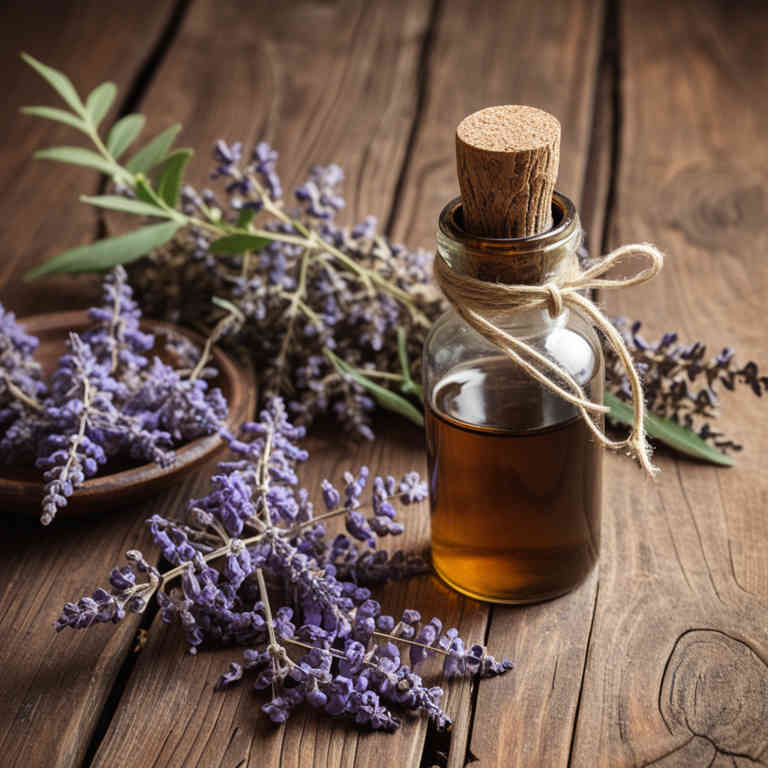
Vitex agnus-castus herbal tinctures are used to support hormonal balance, particularly in women experiencing menstrual irregularities, premenstrual syndrome (PMS), or symptoms of menopause.
These tinctures are valued for their ability to regulate the menstrual cycle and alleviate cramping, mood swings, and breast tenderness associated with hormonal fluctuations. The herb is believed to influence the pituitary gland, which in turn affects the production of reproductive hormones like estrogen and progesterone. Its use extends to addressing infertility by improving ovulation and hormonal alignment.
Due to its natural composition and mild side effect profile, vitex agnus-castus is often preferred as a complementary therapy in holistic women's health care.
2. Urtica dioica

Urtica dioica herbal tinctures are used to support digestive health by stimulating the production of digestive enzymes and improving nutrient absorption.
They are also valued for their anti-inflammatory properties, which can help alleviate symptoms of conditions like arthritis and skin irritations. These tinctures are commonly used to detoxify the body by supporting liver function and aiding in the elimination of toxins. Additionally, they are known to have a mild diuretic effect, which can help in managing fluid retention and promoting kidney health.
Due to their rich content of bioactive compounds such as flavonoids and vitamins, urtica dioica tinctures are considered a versatile natural remedy with a wide range of therapeutic benefits.
3. Zingiber officinale
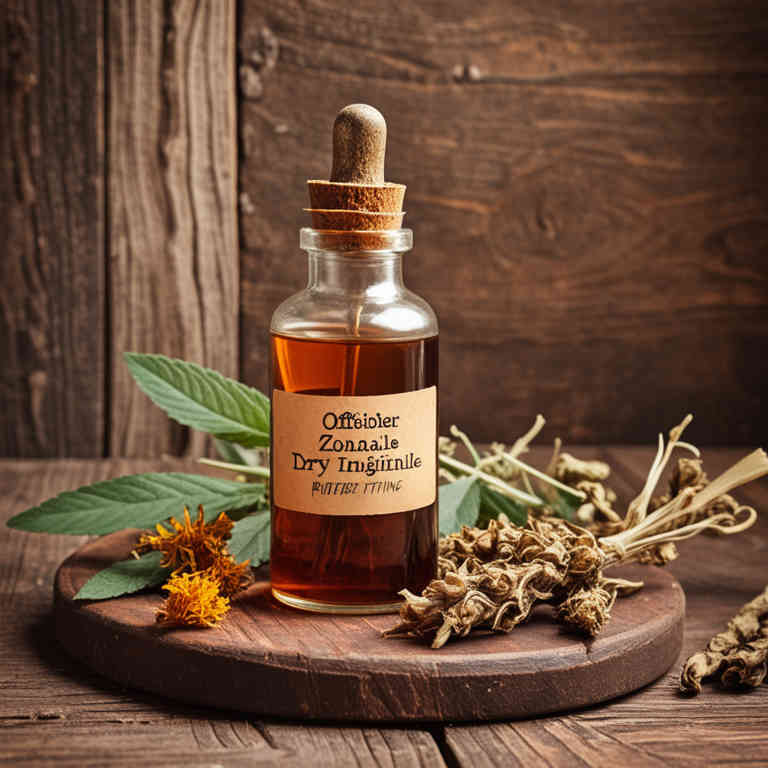
Zingiber officinale herbal tinctures are used to support digestive health by stimulating the production of digestive enzymes and reducing bloating and gas.
They are also commonly utilized to alleviate nausea, making them beneficial for individuals experiencing morning sickness or motion sickness. These tinctures may help reduce inflammation due to their anti-inflammatory properties, which can be useful for conditions like arthritis or muscle pain. Additionally, they are known to enhance circulation and promote a sense of well-being, often used in traditional medicine for their warming effects.
The versatility and natural composition of zingiber officinale tinctures make them a popular choice for those seeking holistic health solutions.
4. Echinacea purpurea
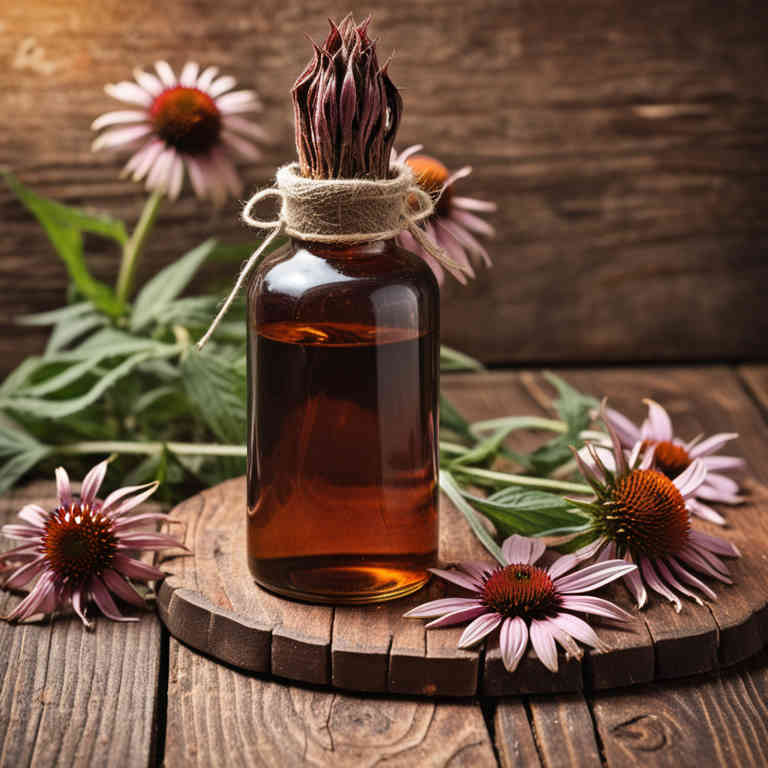
Echinacea purpurea herbal tinctures are used to support the immune system and reduce the duration of cold symptoms.
They are commonly taken during the early stages of a cold to help the body fight off viral infections more effectively. The active compounds in echinacea, such as polysaccharides and caffeic acid, are believed to enhance immune function by stimulating the production of white blood cells. These tinctures are also used for their anti-inflammatory and antimicrobial properties, which may help alleviate symptoms like sore throat and nasal congestion.
Due to their natural origin and potential health benefits, echinacea purpurea tinctures are a popular choice for those seeking alternative remedies for respiratory ailments.
5. Silybum marianum
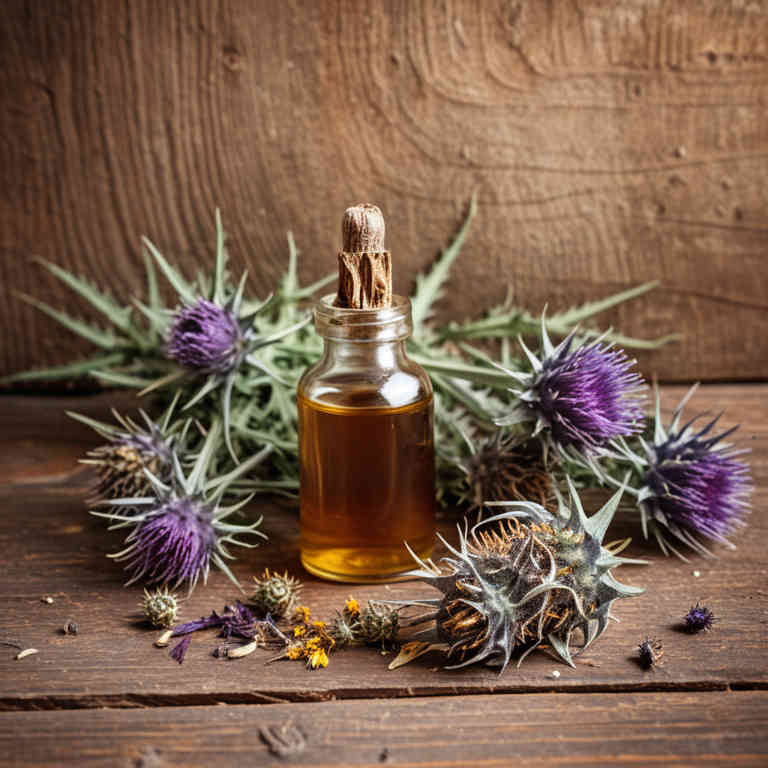
Silybum marianum herbal tinctures are used to support liver health and detoxification by promoting the regeneration of liver cells.
They contain compounds like silymarin, which act as antioxidants and anti-inflammatory agents, helping to protect the liver from damage caused by toxins, alcohol, and certain medications. These tinctures are also believed to aid in the treatment of conditions such as cirrhosis and hepatitis by enhancing the liver's natural cleansing processes. Due to their hepatoprotective properties, they are often recommended as a natural supplement for those with compromised liver function.
Overall, silybum marianum tinctures are valued for their potential to improve liver function and overall metabolic health.
6. Cnicus benedictus

Cnicus benedictus herbal tinctures are used to support respiratory health by helping to alleviate symptoms of coughs, bronchitis, and other respiratory ailments.
These tinctures are valued for their expectorant properties, which aid in loosening mucus and promoting its expulsion from the respiratory tract. They are also believed to have anti-inflammatory effects, which can reduce irritation and inflammation in the airways. Traditionally, they have been used to strengthen the immune system and improve overall lung function.
Due to their natural composition and historical use in herbal medicine, cnicus benedictus tinctures are often preferred by those seeking alternative or complementary treatments for respiratory conditions.
7. Achillea millefolium
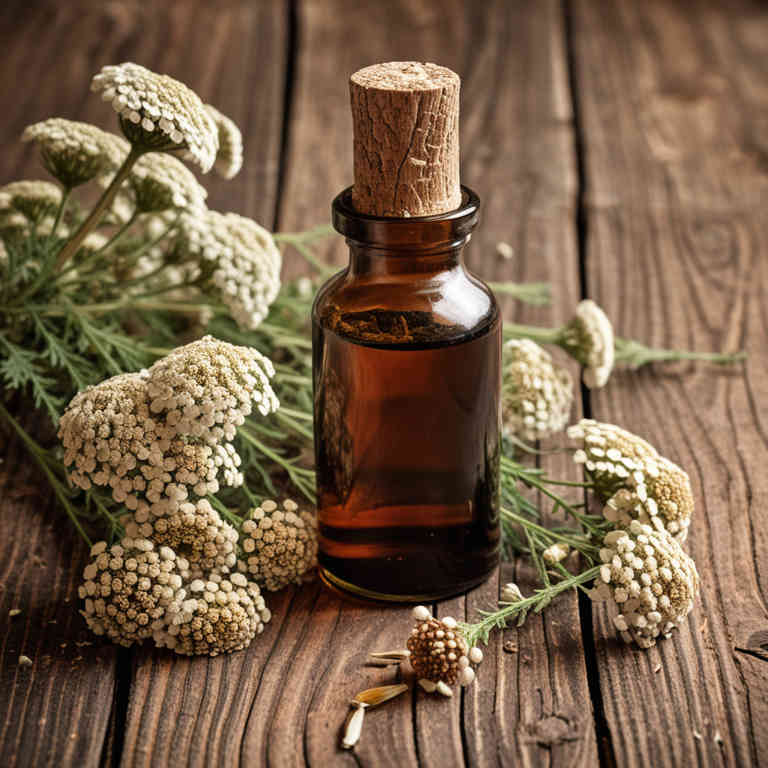
Achillea millefolium herbal tinctures are used to promote wound healing and reduce inflammation due to their rich content of essential oils and flavonoids.
These tinctures are commonly applied topically to treat minor cuts, bruises, and skin irritations, as they possess antimicrobial and antiseptic properties. Additionally, they are used internally to support digestive health and alleviate symptoms of indigestion or bloating. The plant's historical use by ancient civilizations further underscores its efficacy in traditional medicine.
Overall, achillea millefolium tinctures are valued for their versatility and natural therapeutic benefits.
8. Rosa canina

Rosa canina herbal tinctures are used to support immune function and promote overall wellness due to their high concentration of antioxidants and vitamin C. These tinctures are often incorporated into traditional medicine to alleviate symptoms of respiratory infections and boost the body's natural defenses.
Additionally, they are valued for their anti-inflammatory properties, which can help reduce inflammation in the joints and support joint health. Rosa canina is also believed to aid in digestive health by stimulating the production of digestive enzymes and improving nutrient absorption.
Because of these benefits, rosa canina tinctures are widely used in herbal remedies to enhance vitality and support the body's healing processes.
9. Hypericum perforatum
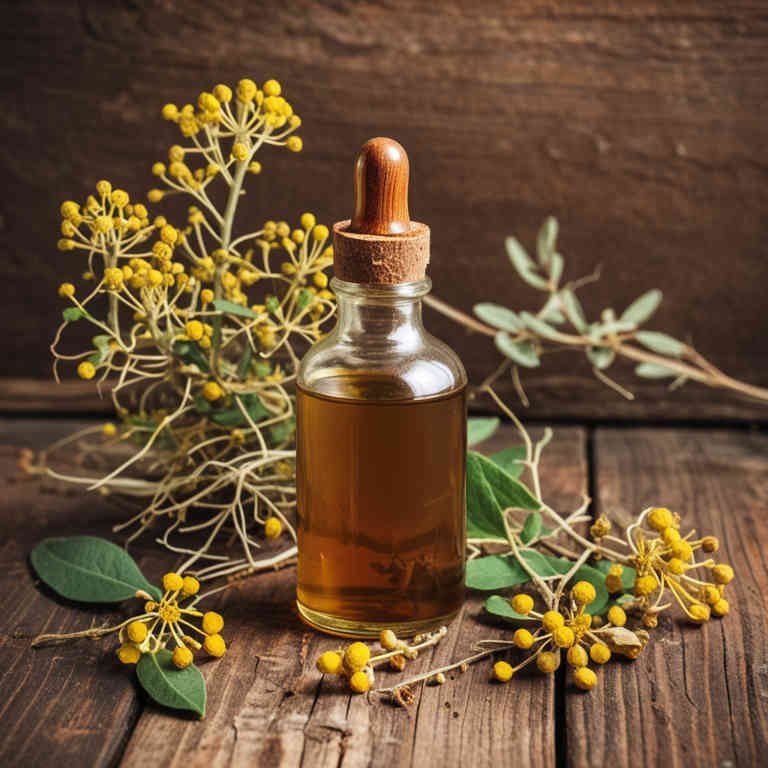
Hypericum perforatum herbal tinctures are used to support mental health by alleviating symptoms of mild to moderate depression and anxiety.
These tinctures contain hyperforin and hypericin, which are believed to influence neurotransmitters such as serotonin and dopamine, promoting mood stabilization. They are also commonly used to reduce inflammation and support the healing of wounds due to their antimicrobial and antioxidant properties. Additionally, hypericum perforatum tinctures may help manage seasonal affective disorder by regulating circadian rhythms and improving overall well-being.
Their versatility and natural composition make them a popular choice for individuals seeking complementary therapy options.
10. Salvia officinalis
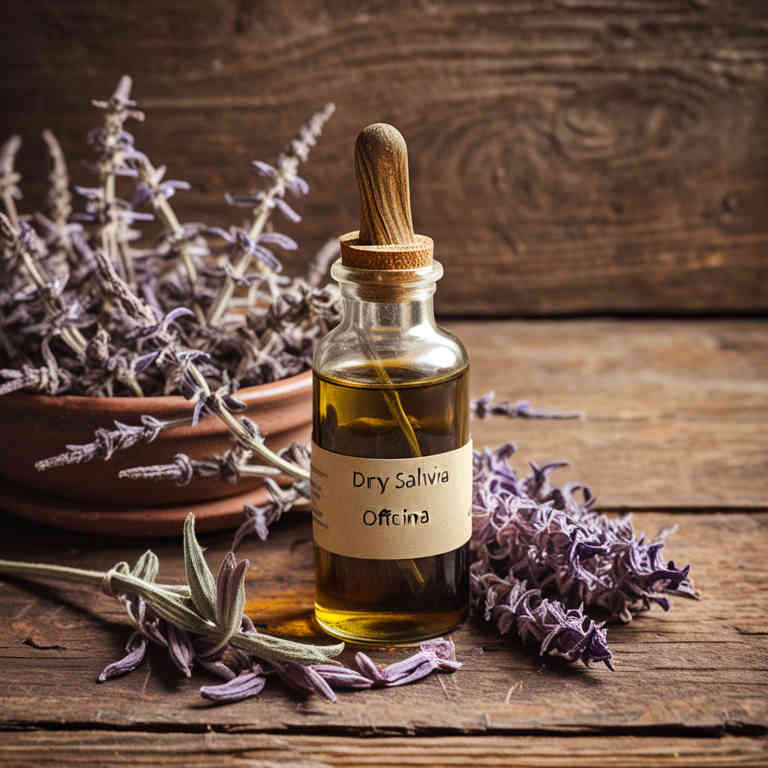
Salvia officinalis herbal tinctures are used to support digestive health by stimulating the production of digestive enzymes and reducing inflammation in the gastrointestinal tract.
They are also commonly utilized to alleviate symptoms of respiratory conditions such as coughs and sore throats due to their expectorant and antimicrobial properties. These tinctures can help manage stress and anxiety by promoting calmness and improving mental clarity through their adaptogenic qualities. Additionally, they are used topically to treat skin conditions like wounds, eczema, and insect bites due to their antiseptic and anti-inflammatory effects.
The versatility of salvia officinalis tinctures makes them a valuable natural remedy for a wide range of health concerns.
11. Glycyrrhiza glabra

Glycyrrhiza glabra herbal tinctures are used to support respiratory health by helping to soothe coughs and reduce inflammation in the airways.
They are also commonly utilized to alleviate symptoms of digestive issues such as indigestion and ulcers due to their anti-inflammatory and protective properties on the stomach lining. Additionally, these tinctures are valued for their potential to balance hormone levels, making them a popular choice in herbal medicine for stress-related conditions. The presence of glycyrrhizin, a compound with mild corticosteroid-like effects, contributes to their ability to modulate the immune system and reduce allergic reactions.
Overall, glycyrrhiza glabra tinctures are valued for their versatility and wide range of therapeutic applications in traditional and modern herbal practices.
12. Curcuma longa
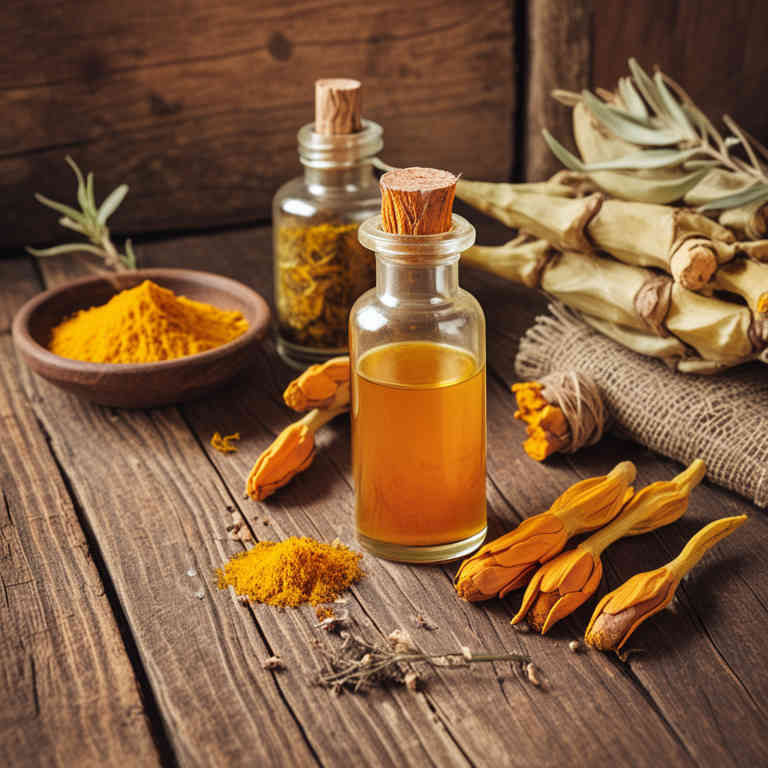
Curcuma longa herbal tinctures are used to support digestive health by reducing inflammation and promoting the secretion of digestive enzymes.
They are also commonly employed to alleviate symptoms of arthritis and other inflammatory conditions due to their potent anti-inflammatory properties. These tinctures may help in managing skin conditions such as acne and eczema by reducing oxidative stress and promoting skin healing. Additionally, curcuma longa tinctures are valued for their ability to enhance cognitive function and may support mental clarity and memory.
Their versatility and natural origin make them a popular choice for those seeking holistic and complementary health solutions.
13. Piper nigrum
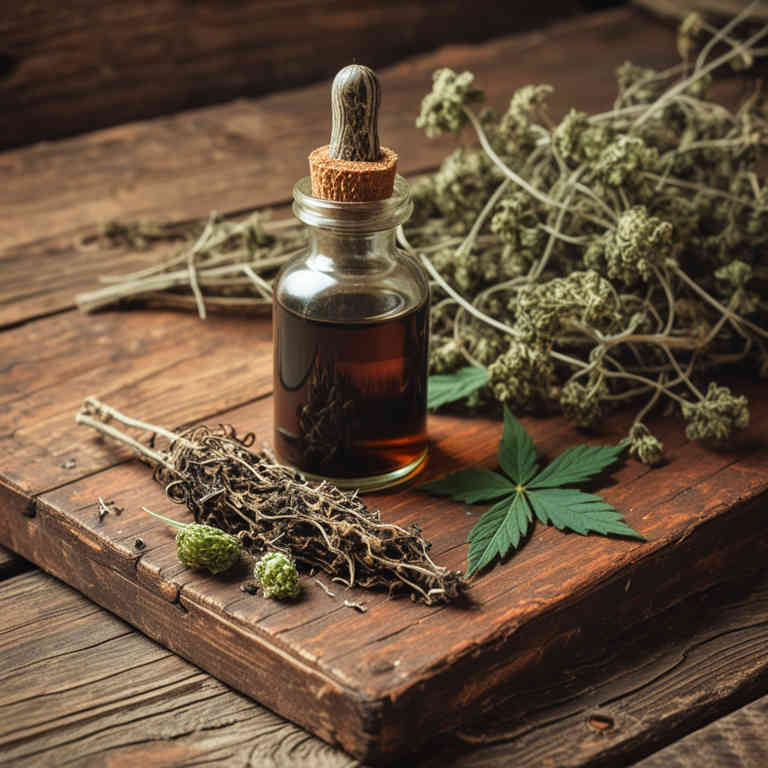
Piper nigrum herbal tinctures are used to support digestive health by stimulating the production of digestive enzymes and reducing bloating.
They are also valued for their antimicrobial properties, which can help combat harmful bacteria in the gut. These tinctures are often incorporated into traditional medicine practices to alleviate symptoms of indigestion and nausea. The active compounds in black pepper, such as piperine, enhance the absorption of other nutrients and herbs, making them a valuable complementary therapy.
Overall, piper nigrum tinctures are favored for their natural ability to promote gastrointestinal wellness and improve overall metabolic function.
14. Lavandula angustifolia
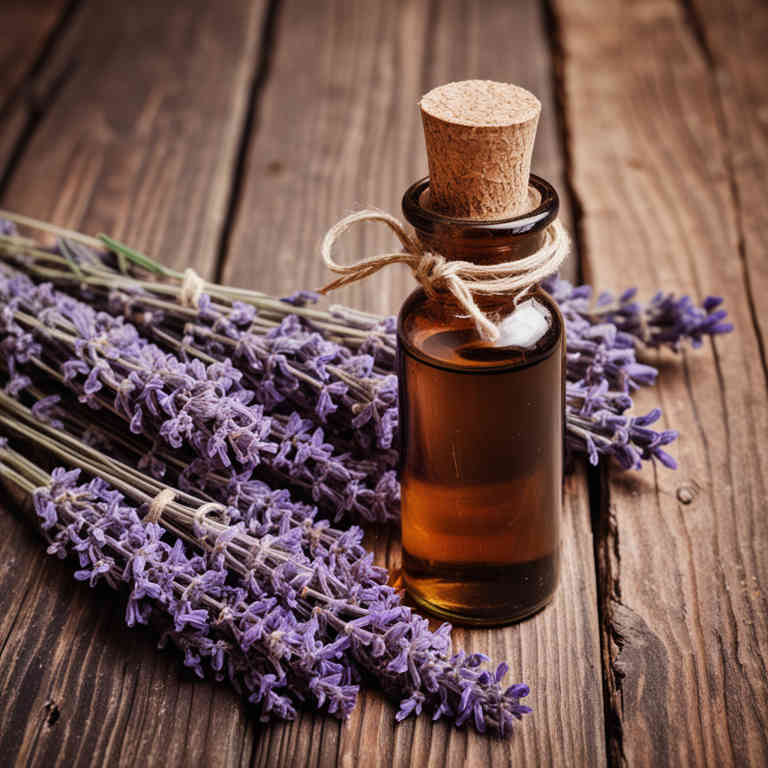
Lavandula angustifolia herbal tinctures are used to promote relaxation and reduce stress due to their calming properties.
These tinctures are commonly applied topically to alleviate muscle pain and inflammation, making them beneficial for individuals suffering from arthritis or muscle strains. They are also used to support skin health by soothing irritations and promoting healing due to their antiseptic and anti-inflammatory effects. The essential oils in the tinctures can be diffused to create a serene atmosphere, aiding in mental clarity and emotional balance.
Overall, the versatility of lavandula angustifolia tinctures makes them a valuable natural remedy for both physical and emotional well-being.
15. Cinnamomum verum
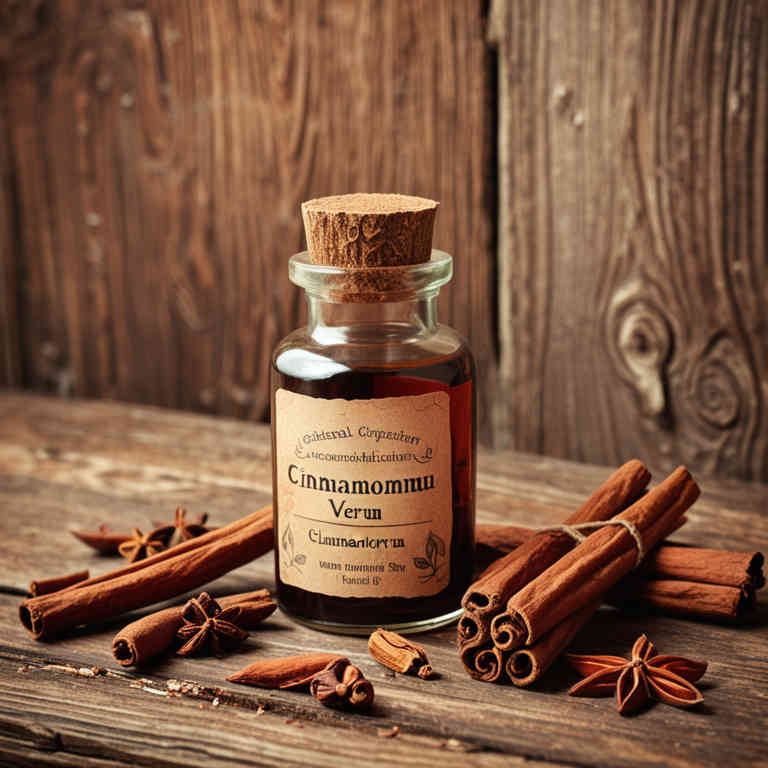
Cinnamomum verum herbal tinctures are used to support digestive health by stimulating the production of digestive enzymes and reducing bloating.
They are also employed to alleviate symptoms of respiratory conditions such as coughs and colds due to their antimicrobial and anti-inflammatory properties. These tinctures can help manage stress and anxiety by promoting relaxation and improving mood through their calming effects on the nervous system. Additionally, they are valued for their ability to enhance circulation and may aid in reducing inflammation in the body.
Overall, cinnamomum verum tinctures are prized for their versatility in addressing a range of health concerns, making them a popular choice in herbal medicine.
16. Mentha piperita
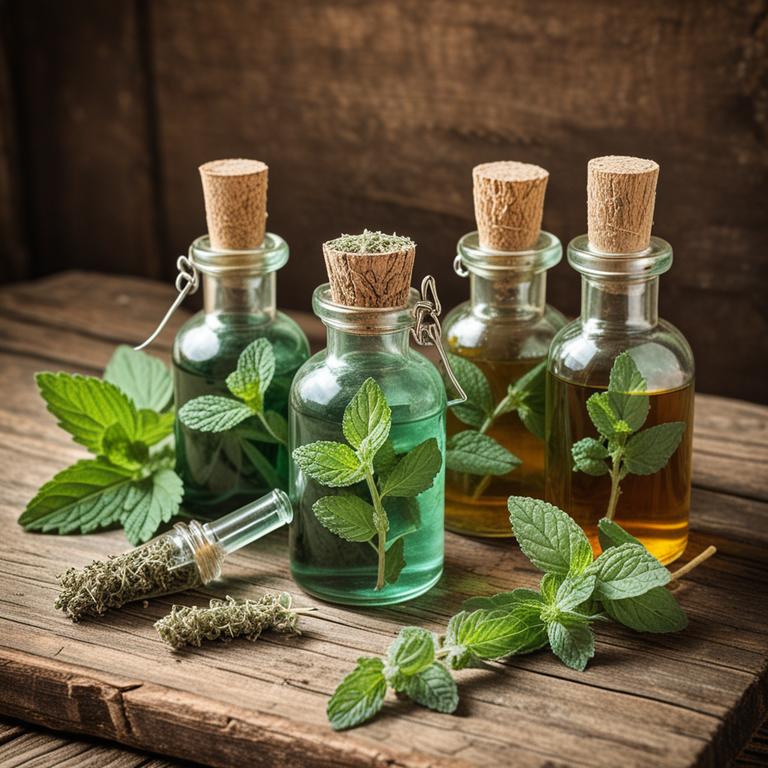
Mentha piperita herbal tinctures are used to support digestive health by stimulating the secretion of digestive enzymes and reducing symptoms of indigestion, bloating, and gas.
They are also commonly used to relieve respiratory congestion due to their decongestant and expectorant properties, making them beneficial for conditions like bronchitis and the common cold. Additionally, mentha piperita tinctures are valued for their ability to alleviate headaches and migraines by promoting circulation and easing muscle tension. Their calming effects also make them useful in managing stress and anxiety, offering a natural alternative to conventional remedies.
Overall, these tinctures are favored for their versatility and effectiveness in addressing a range of minor health issues with minimal side effects.
17. Rosmarinus officinalis
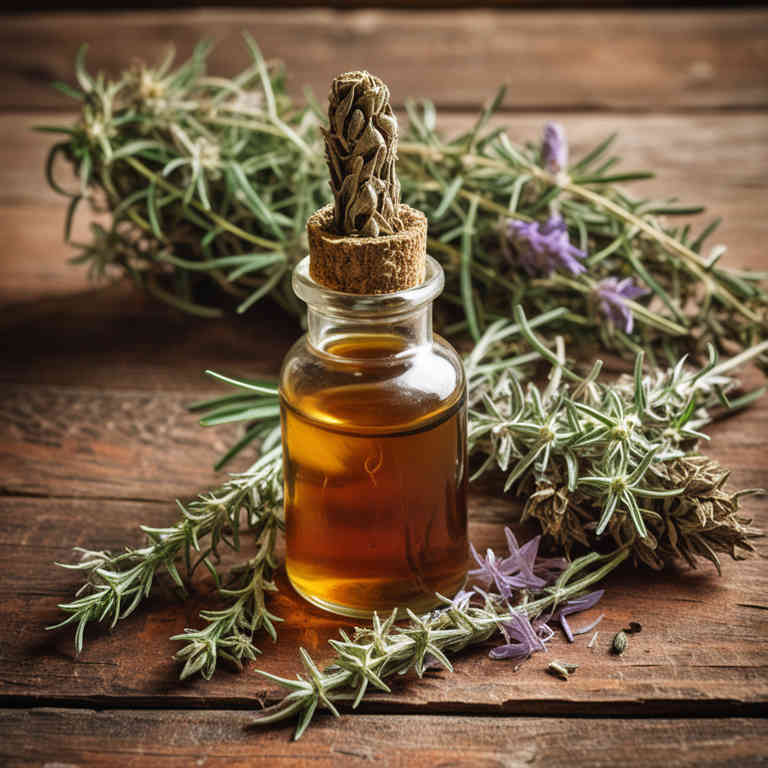
Rosmarinus officinalis herbal tinctures are used to support respiratory health by helping to alleviate symptoms of coughs and colds due to their expectorant and anti-inflammatory properties.
They are also valued for their ability to enhance mental clarity and reduce stress, making them popular in aromatherapy and as natural remedies for anxiety and fatigue. These tinctures can aid in digestion by stimulating the production of digestive enzymes and improving gut motility. Additionally, they are used topically to promote skin healing and reduce inflammation, thanks to their antimicrobial and antioxidant compounds.
Overall, the versatility of rosmarinus officinalis tinctures makes them a valuable resource in both traditional and modern herbal medicine.
18. Nigella sativa

Nigella sativa herbal tinctures are used to support immune system function and reduce inflammation in the body.
They are often incorporated into traditional medicine practices for their potential antimicrobial and antioxidant properties. These tinctures may aid in respiratory health by alleviating symptoms of coughs and colds. Additionally, they are believed to promote digestive health and may help in managing conditions like irritable bowel syndrome.
The bioactive compounds in nigella sativa, such as thymoquinone, contribute to its therapeutic effects, making it a valued herbal remedy across various cultures.
19. Sanguinaria canadensis
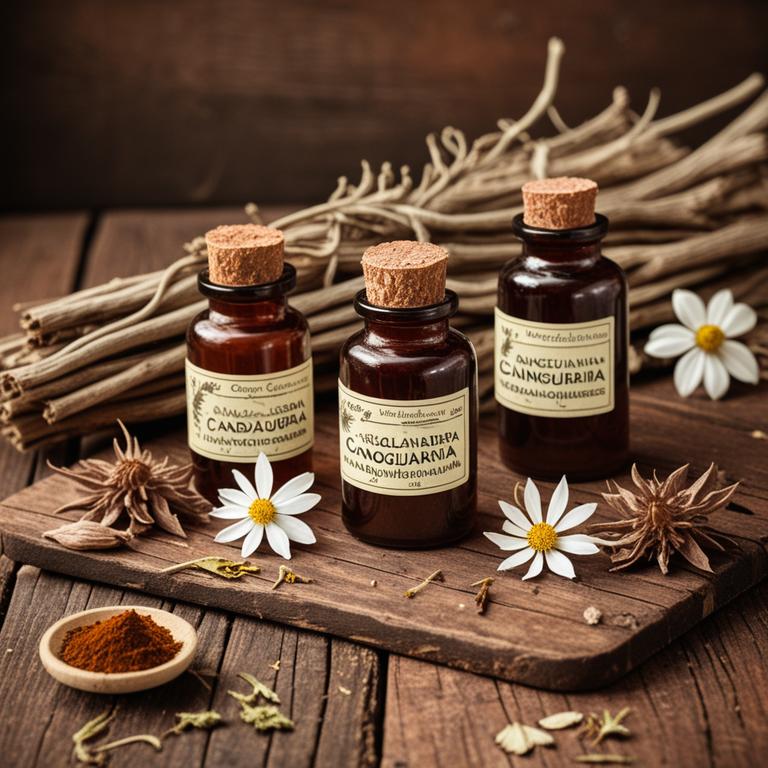
Sanguinaria canadensis herbal tinctures are used to support respiratory health by helping to relieve symptoms of coughs and colds due to their expectorant properties.
These tinctures are also valued for their ability to promote skin healing, as they contain compounds that may reduce inflammation and aid in the treatment of minor skin irritations. Additionally, they have been traditionally used to address digestive issues, such as indigestion and bloating, by stimulating digestive enzymes and improving gut motility. The presence of alkaloids like sanguinarine contributes to their antimicrobial and anti-inflammatory effects, making them useful in supporting immune function.
Overall, sanguinaria canadensis tinctures are favored for their versatile therapeutic applications, though they should be used with caution and under professional guidance.
20. Chamomilla recutita
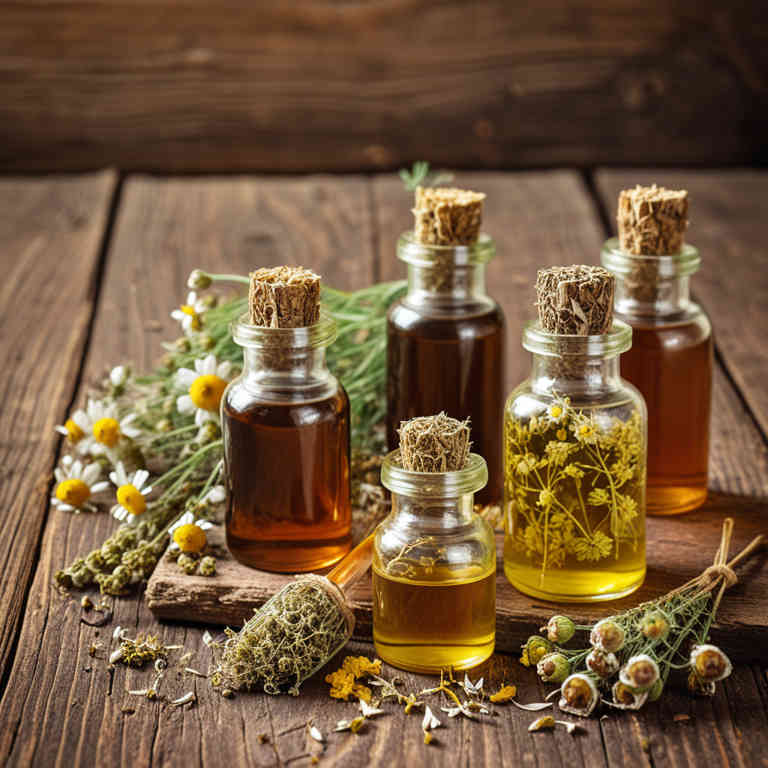
Chamomilla recutita herbal tinctures are used to promote relaxation and ease anxiety by calming the nervous system.
They are commonly employed in alternative medicine to alleviate digestive issues such as bloating, cramps, and indigestion due to their anti-inflammatory and antispasmodic properties. These tinctures also support skin health by reducing inflammation and soothing irritations, making them useful for treating eczema and minor burns. Their ability to induce sleep makes them a popular remedy for insomnia and restlessness.
Overall, chamomilla recutita tinctures are valued for their versatile therapeutic effects, offering natural relief for a range of physical and emotional ailments.
21. Thymus vulgaris
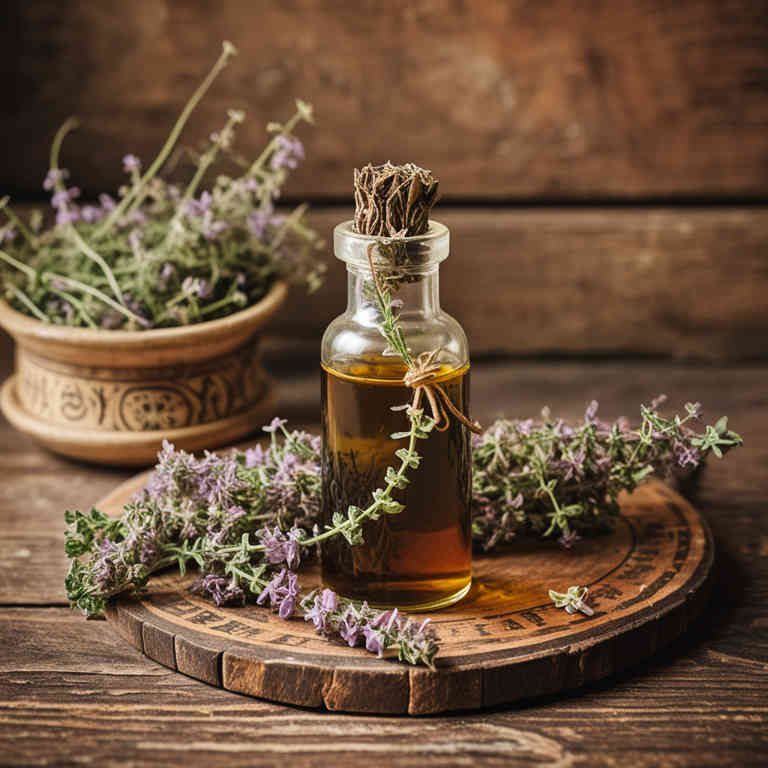
Thymus vulgaris herbal tinctures are used to support respiratory health by helping to relieve symptoms of colds, coughs, and bronchitis due to their expectorant and antiseptic properties.
These tinctures are also valued for their ability to boost the immune system, making them a popular remedy during flu season or for individuals with chronic respiratory conditions. The essential oils in thyme tinctures, such as thymol and carvacrol, have antimicrobial and anti-inflammatory effects that can help fight infections and reduce inflammation in the airways. Additionally, thymus vulgaris tinctures are often used topically to treat skin infections and minor wounds because of their antiseptic and healing properties.
Overall, the versatility and potency of thyme tinctures make them a valuable natural remedy for a range of health concerns.
22. Nymphaea alba
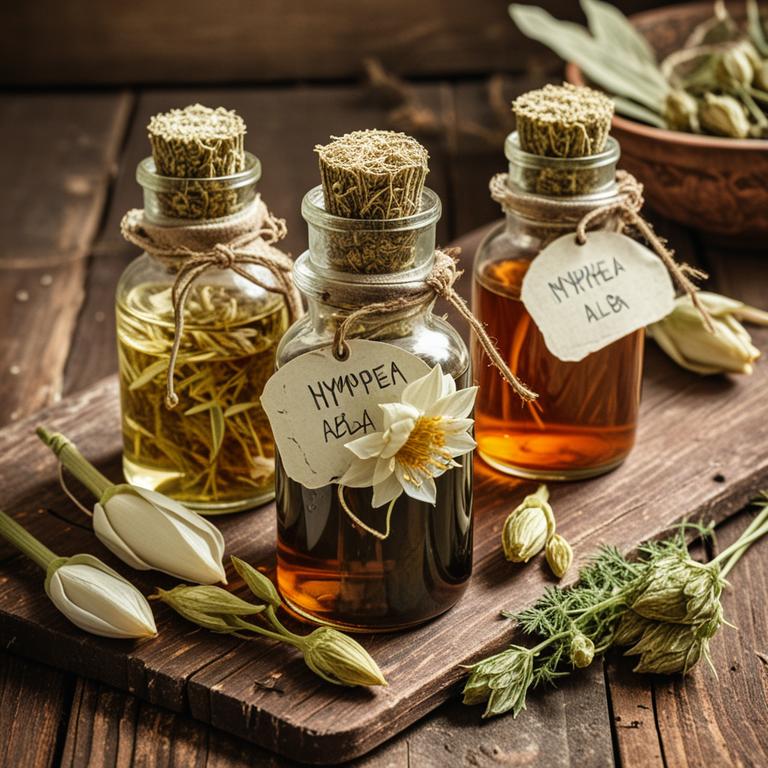
Nymphaea alba herbal tinctures are used to support skin health and treat various dermatological conditions due to their anti-inflammatory and soothing properties.
These tinctures are often applied topically to reduce redness, irritation, and inflammation associated with eczema, psoriasis, and other skin disorders. The active compounds in Nymphaea alba, such as flavonoids and tannins, help to calm sensitive skin and promote healing. They are also valued for their calming effects, which can aid in reducing stress-related skin issues.
Because of their natural composition and minimal side effects, Nymphaea alba tinctures are a popular choice for those seeking gentle, effective skincare solutions.
23. Matricaria chamomilla
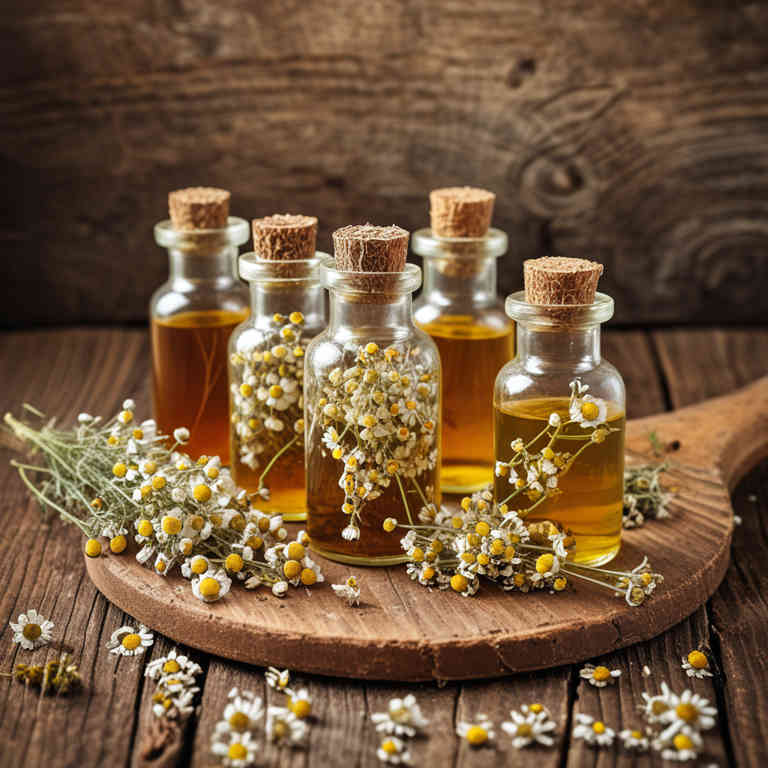
Matricaria chamomilla herbal tinctures are used to promote relaxation and ease anxiety due to their calming properties.
They are often employed in natural remedies for digestive issues such as indigestion, bloating, and stomach cramps. The tinctures can also help alleviate symptoms of skin irritations and minor wounds because of their anti-inflammatory and antiseptic qualities. Additionally, they are utilized in aromatherapy to reduce stress and enhance sleep quality.
Their versatility and mild side effect profile make them a popular choice for those seeking holistic health solutions.
24. Foeniculum vulgare
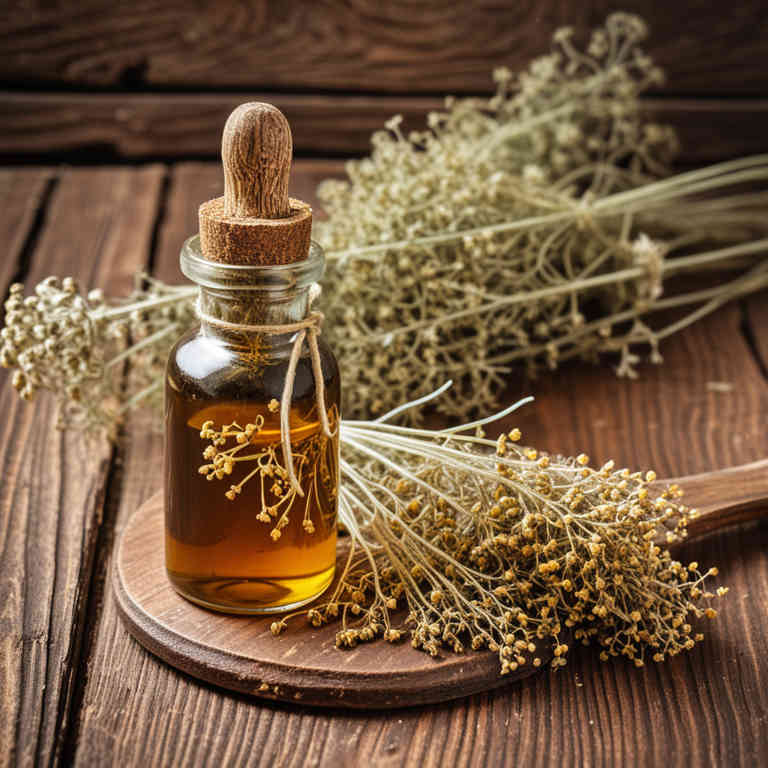
Foeniculum vulgare herbal tinctures are used to support digestive health by promoting the secretion of digestive enzymes and reducing bloating and gas.
They are also valued for their ability to ease respiratory congestion and soothe coughs due to their expectorant properties. These tinctures may help alleviate symptoms of mild anxiety and stress by acting as a mild sedative and calming agent. Additionally, they are often used topically to relieve muscle aches and inflammation because of their anti-inflammatory and analgesic effects.
The versatility of foeniculum vulgare makes it a popular choice in herbal medicine for its wide range of therapeutic benefits.
25. Ginkgo biloba
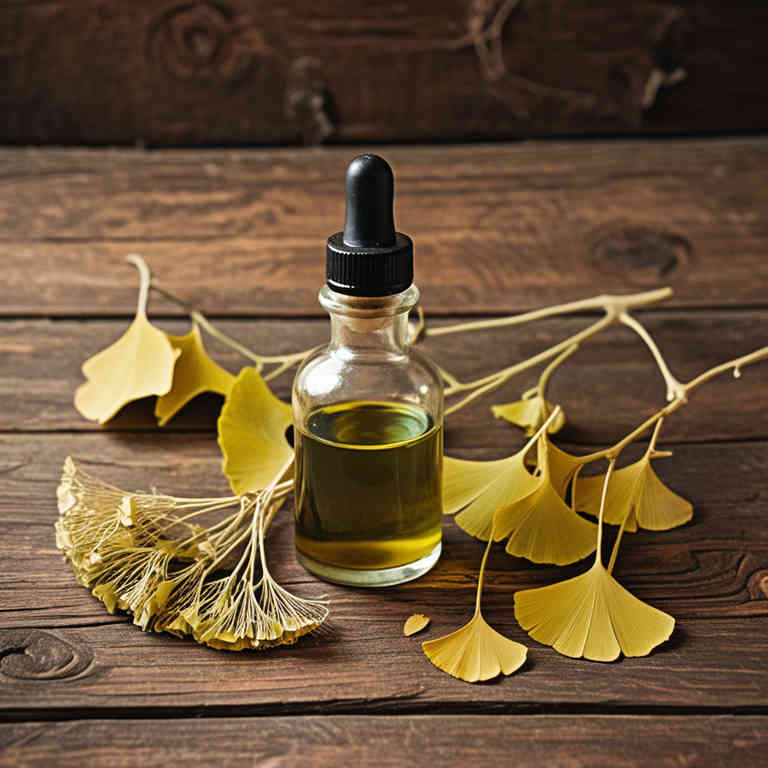
Ginkgo biloba herbal tinctures are used to enhance cognitive function and improve memory by increasing blood flow to the brain.
They are also commonly utilized to support circulatory health, as they contain compounds that may help dilate blood vessels and improve oxygen delivery to tissues. Additionally, ginkgo biloba tinctures are used to alleviate symptoms of anxiety and stress due to their potential calming effects on the nervous system. The herb is also believed to have antioxidant properties that protect cells from damage, making it beneficial for overall health and longevity.
These uses are supported by traditional herbal practices and some modern scientific research, although more studies are needed to fully confirm their efficacy.
26. Vitis vinifera
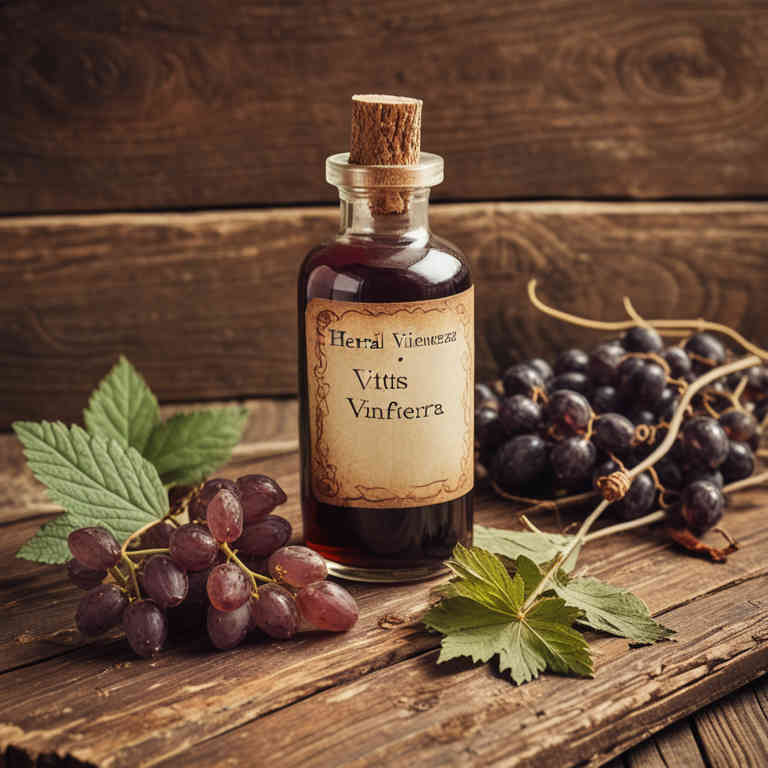
Vitis vinifera herbal tinctures are used to support cardiovascular health by promoting healthy blood flow and reducing oxidative stress.
These tinctures contain resveratrol, a potent antioxidant known for its ability to protect cells from damage caused by free radicals. They are also commonly used to enhance cognitive function and may help improve memory and mental clarity. Additionally, vitis vinifera tinctures are valued for their potential to reduce inflammation and support joint health.
Due to their rich phytochemical content, these tinctures are increasingly sought after for their holistic health benefits and natural therapeutic properties.
27. Cuminum cyminum
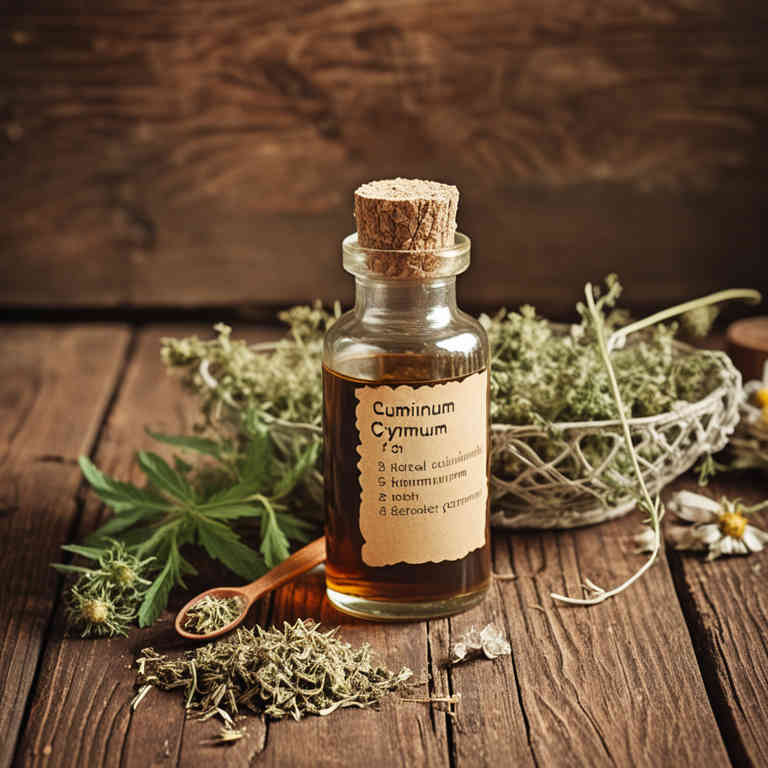
Cuminum cyminum herbal tinctures are used to support digestive health by stimulating the production of digestive enzymes and relieving symptoms of indigestion, bloating, and gas.
They are also valued for their ability to alleviate respiratory issues such as coughs and congestion due to their expectorant properties. These tinctures may help in reducing inflammation and pain, making them useful for conditions like arthritis or muscle aches. Additionally, cuminum cyminum is known for its antimicrobial properties, which can support immune function and help combat infections.
Overall, the versatility of cuminum cyminum herbal tinctures makes them a valuable remedy in both traditional and modern herbal medicine.
28. Equisetum arvense
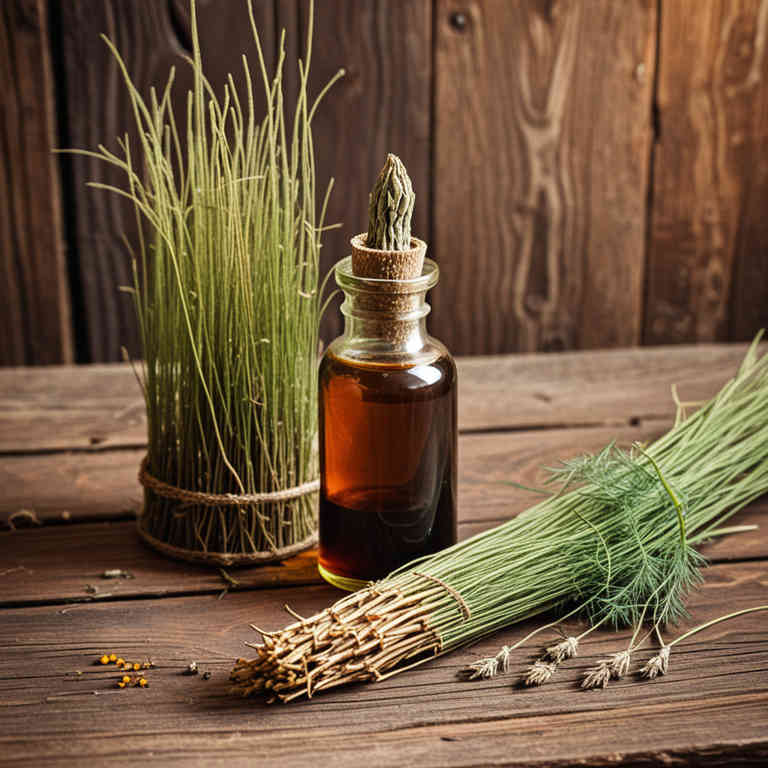
Equisetum arvense herbal tinctures are used to support detoxification processes in the body due to their high concentration of silica and other bioactive compounds.
These tinctures are often incorporated into holistic health regimens to aid in the removal of heavy metals and toxins from the bloodstream. The natural properties of equisetum arvense make it particularly effective in promoting liver and kidney function, which are essential for metabolic health. Additionally, they are believed to enhance the body's natural cleansing mechanisms, making them a popular choice in alternative medicine.
Their historical use in herbal traditions further underscores their potential benefits for overall wellness and internal purification.
29. Artemisia vulgaris

Artemisia vulgaris herbal tinctures are used to support digestive health by stimulating bile production and aiding in the digestion of fats.
They are also commonly used to alleviate symptoms of gastrointestinal disorders such as indigestion, bloating, and flatulence due to their carminative properties. Additionally, these tinctures are valued for their antimicrobial and antiparasitic effects, making them useful in treating mild infections and parasitic infestations. The herb’s ability to reduce inflammation and support liver function further enhances its role in detoxification and overall wellness.
Because of these diverse therapeutic properties, artemisia vulgaris tinctures are a popular choice in traditional and complementary medicine practices.
30. Aloe barbadensis

Aloe barbadensis herbal tinctures are used to promote skin health and healing due to their anti-inflammatory and soothing properties.
These tinctures can help reduce redness, irritation, and inflammation associated with various skin conditions such as eczema, psoriasis, and sunburn. They are also commonly used to support digestive health by aiding in the relief of mild digestive discomfort and promoting healthy bowel movements. The natural compounds in aloe barbadensis, such as polysaccharides and enzymes, contribute to its effectiveness in both topical and internal applications.
Overall, aloe barbadensis tinctures are valued for their versatility and ability to address multiple health concerns with a natural, holistic approach.
31. Echinacea angustifolia

Echinacea angustifolia herbal tinctures are used to support the immune system and alleviate symptoms of the common cold and respiratory infections.
They are believed to stimulate the production of white blood cells, which help the body fight off viral and bacterial infections. These tinctures are also commonly used to reduce inflammation and promote healing in conditions such as sore throats and skin irritations. Their natural antiviral and antibacterial properties make them a popular choice for those seeking alternative or complementary health solutions.
Due to their potential to enhance immune function and reduce the duration of illnesses, echinacea angustifolia tinctures are widely recommended for seasonal wellness support.
32. Pimpinella anisum
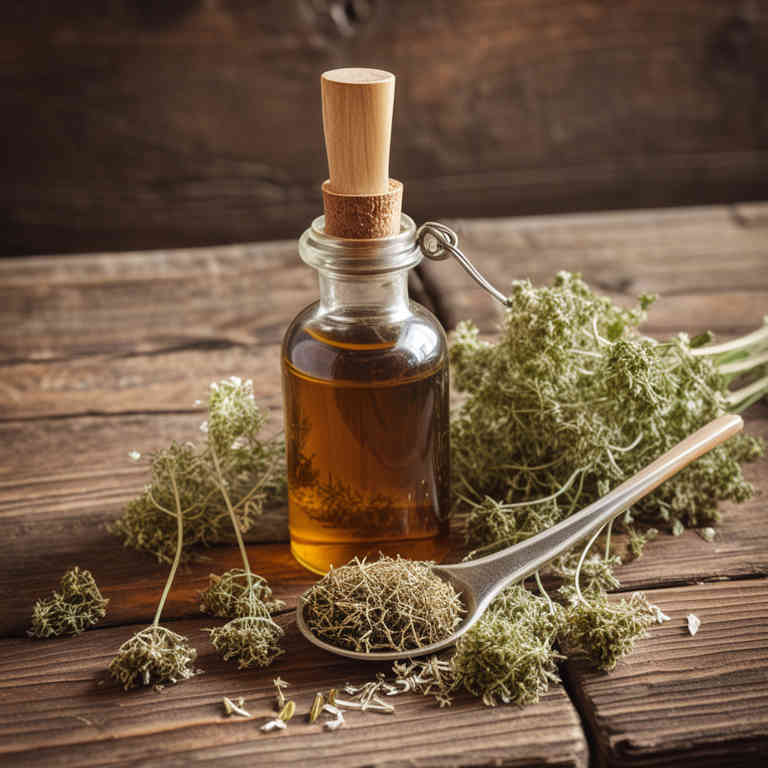
Pimpinella anisum herbal tinctures are used to support digestive health by stimulating the production of digestive enzymes and relieving symptoms of indigestion, bloating, and gas.
These tinctures are also valued for their calming properties, making them useful in reducing stress and anxiety due to the presence of essential oils like anethol. Additionally, they can help alleviate respiratory issues such as coughs and bronchitis by acting as a natural expectorant and soothing the respiratory tract. The anti-inflammatory and antimicrobial properties of anise make it beneficial for skin conditions and as a natural remedy for colds and sore throats.
Overall, pimpinella anisum tinctures are a versatile herbal remedy that supports both digestive and respiratory wellness, making them a valuable addition to natural health practices.
33. Cinnamomum zeylanicum
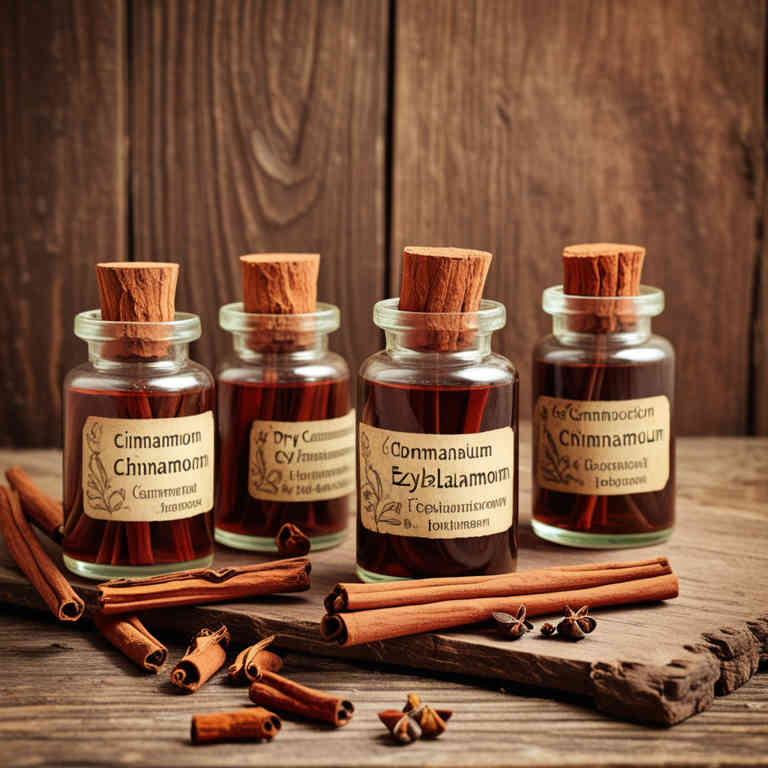
Cinnamomum zeylanicum herbal tinctures are used to support digestive health by stimulating the production of digestive enzymes and reducing bloating.
They are also valued for their antimicrobial properties, which can help in combating bacterial and fungal infections. These tinctures are often incorporated into traditional medicine for their ability to alleviate symptoms of colds and flu due to their warming and decongestant effects. Additionally, they are used to manage stress and anxiety by promoting relaxation and improving mood through their calming aromatic properties.
The versatility and natural efficacy of cinnamomum zeylanicum make it a popular choice in herbal remedies for both physical and emotional well-being.
34. Arnica montana
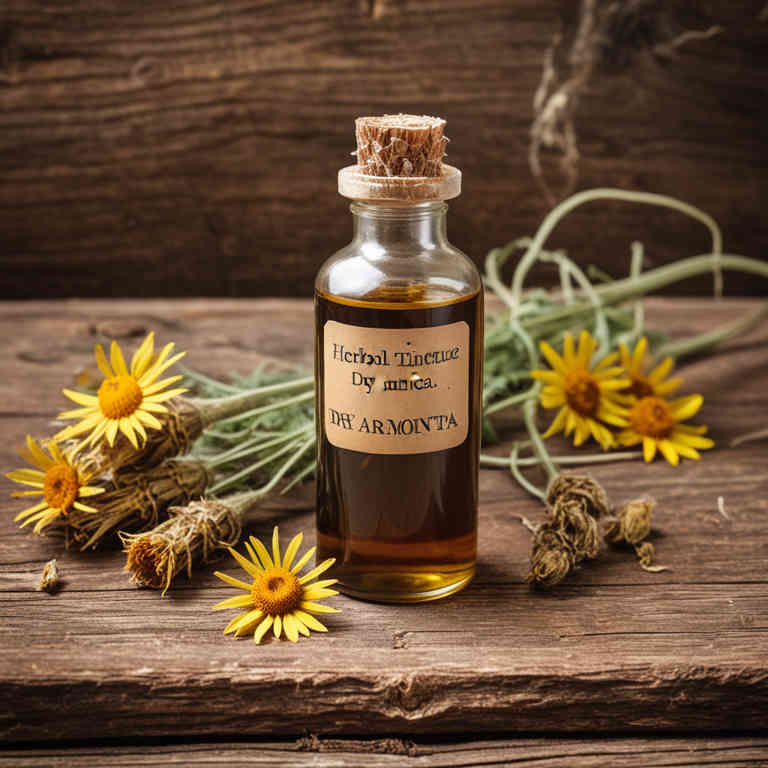
Arnica montana herbal tinctures are used to promote healing and reduce inflammation in musculoskeletal injuries such as bruises, sprains, and strains.
They are commonly applied topically to alleviate pain and swelling by stimulating blood circulation and reducing tissue damage. These tinctures are also valued for their anti-inflammatory and analgesic properties, making them a popular choice in natural medicine for athletes and individuals with chronic pain conditions. However, they should never be ingested due to their potential toxicity when consumed internally.
Their effectiveness is supported by traditional use and some clinical studies, though they are most beneficial when used externally as directed.
35. Melissa officinalis
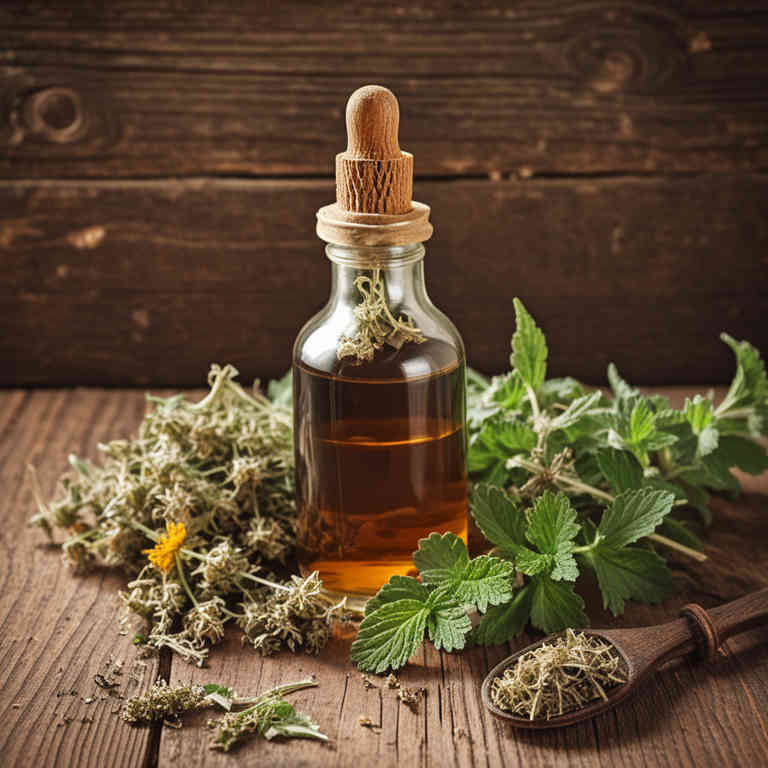
Melissa officinalis herbal tinctures are used to support emotional well-being and reduce symptoms of anxiety and stress.
They are often incorporated into herbal medicine practices for their calming effects on the nervous system. These tinctures may also aid in improving digestion by stimulating the production of digestive enzymes. Additionally, they are valued for their potential to enhance cognitive function and promote mental clarity.
Due to their adaptogenic properties, melissa officinalis tinctures are widely regarded as a natural remedy for balancing mood and fostering overall wellness.
36. Symphytum officinale
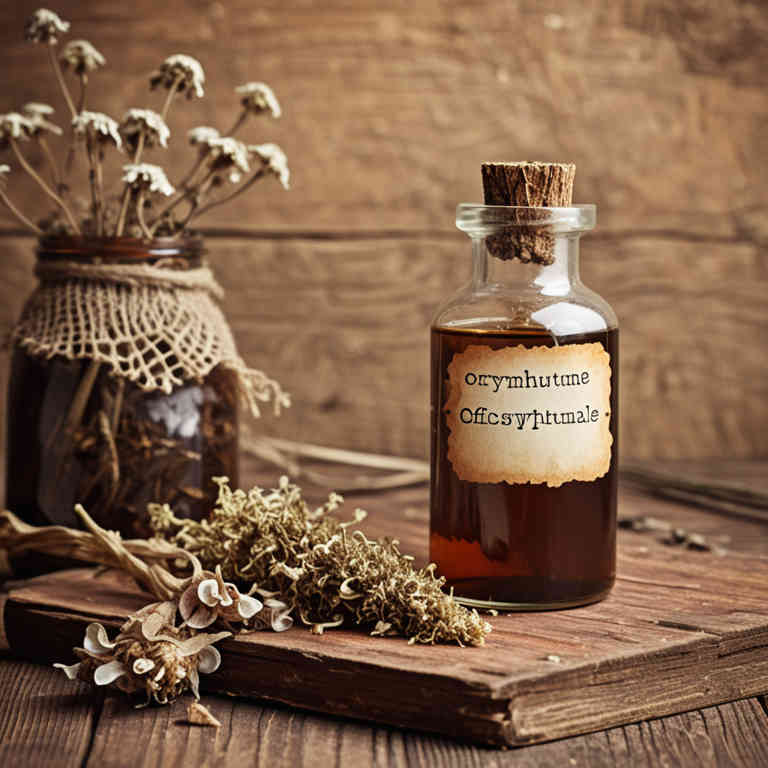
Symphytum officinale herbal tinctures are used to support bone and joint health due to their rich content of allantoin and mucilage, which promote tissue repair and reduce inflammation.
These tinctures are often utilized in herbal medicine to alleviate symptoms of arthritis and other inflammatory conditions by soothing joint pain and enhancing mobility. They are also applied topically to treat wounds, bruises, and skin irritations because of their ability to accelerate healing and reduce swelling. The presence of alkaloids in symphytum officinale may contribute to its analgesic properties, making it a valuable remedy for musculoskeletal discomfort.
Overall, the combination of anti-inflammatory, healing, and pain-relieving effects makes symphytum officinale tinctures a versatile and effective natural treatment option.
37. Petroselinum crispum

Petroselinum crispum herbal tinctures are used to support digestive health by stimulating the production of digestive enzymes and promoting the elimination of toxins from the body.
These tinctures are also valued for their ability to alleviate respiratory issues, such as coughs and congestion, due to their expectorant properties. Additionally, they are commonly used to reduce inflammation and ease muscle spasms, making them beneficial for those suffering from conditions like arthritis or menstrual cramps. The presence of essential oils like apiol and phellandrene in petroselinum crispum contributes to its antimicrobial and antispasmodic effects, enhancing its therapeutic value.
Overall, these tinctures are prized for their versatility and natural ability to address a range of health concerns.
38. Sabadilla tinctura

Sabadilla tinctura herbal tinctures are used to treat respiratory conditions such as coughs, bronchitis, and asthma due to their expectorant and antispasmodic properties.
These tinctures help loosen mucus in the airways, making it easier to expel and alleviate congestion. They are also known to reduce inflammation and soothe irritated airway tissues, providing relief from persistent coughing. The active compounds in sabadilla, such as alkaloids, contribute to its effectiveness in managing symptoms associated with respiratory ailments.
Because of these therapeutic benefits, sabadilla tinctures are a popular choice in herbal medicine for respiratory support.
39. Camellia sinensis
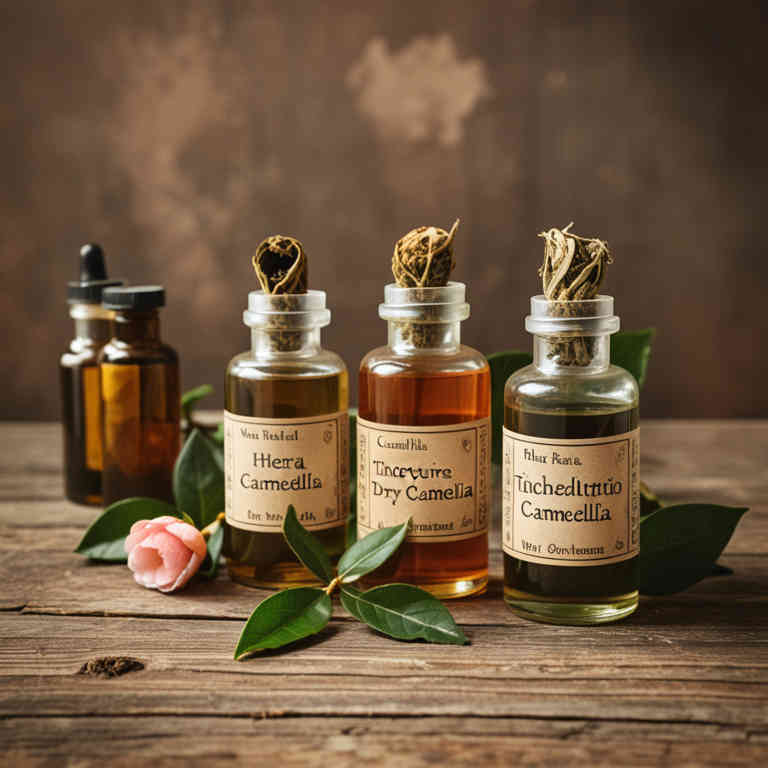
Camellia sinensis herbal tinctures are used to support mental clarity and alertness due to their high concentration of caffeine and other stimulant compounds.
These tinctures are also valued for their potential to enhance mood and reduce symptoms of fatigue by promoting the release of neurotransmitters like dopamine and serotonin. In traditional medicine, they are often used to aid digestion and improve circulation, thanks to their antioxidant and anti-inflammatory properties. Additionally, camellia sinensis tinctures may help in managing stress and anxiety by modulating the body’s stress response.
Their versatility makes them a popular choice for both medicinal and wellness purposes, offering a concentrated form of the plant’s beneficial compounds.
40. Artemisia absinthium
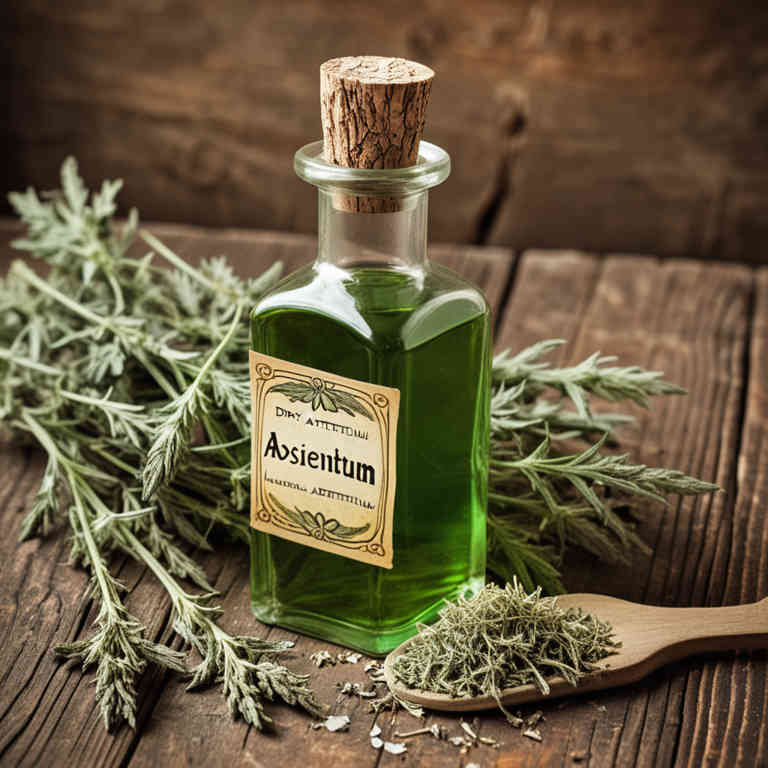
Artemisia absinthium herbal tinctures are used to support digestive health by stimulating bile production and aiding in the digestion of fats.
They are also valued for their potential to alleviate symptoms of digestive disorders such as indigestion, bloating, and sluggish digestion. These tinctures may help in reducing inflammation in the gastrointestinal tract, making them a popular choice for those seeking natural remedies for gut health. Additionally, they have been traditionally used to treat parasitic infections due to their antiparasitic properties.
The presence of compounds like thujone and other volatile oils contributes to their effectiveness in these therapeutic applications.
41. Paeonia suffruticosa
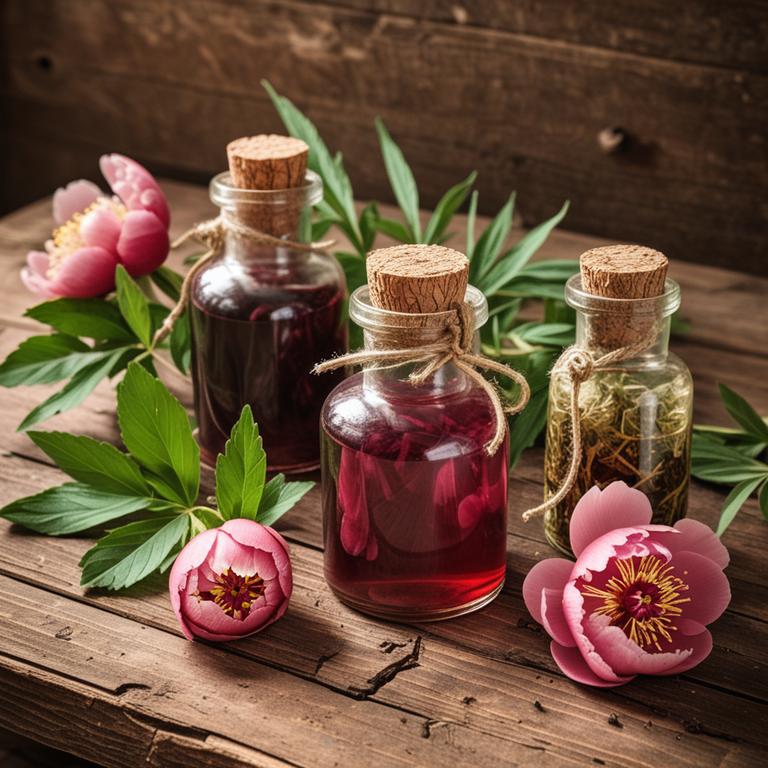
Paeonia suffruticosa herbal tinctures are used to support cardiovascular health by promoting healthy blood flow and reducing arterial stiffness.
They are also valued for their ability to alleviate symptoms of anxiety and stress due to their calming and sedative properties. These tinctures are commonly used in traditional Chinese medicine to address menstrual irregularities and hormonal imbalances in women. Their anti-inflammatory and antioxidant effects make them beneficial for skin health and the treatment of inflammatory conditions.
Overall, paeonia suffruticosa tinctures are prized for their diverse therapeutic applications and their ability to support both physical and emotional well-being.
42. Sambucus nigra
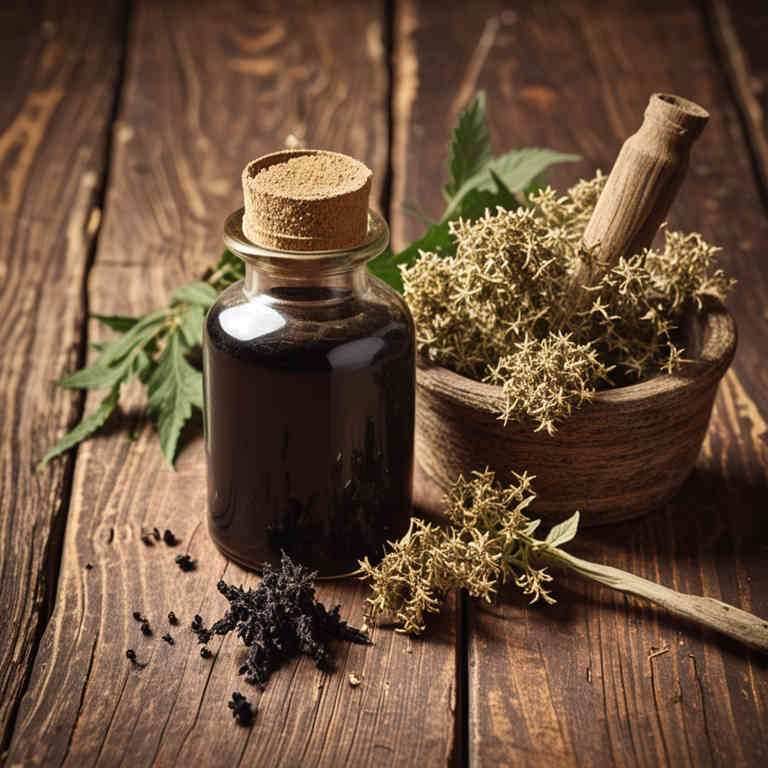
Sambucus nigra herbal tinctures are used to support the immune system by stimulating the production of white blood cells and enhancing the body's defenses against viral and bacterial infections.
They are also commonly utilized to alleviate symptoms of respiratory conditions such as the common cold, flu, and bronchitis due to their antiviral and anti-inflammatory properties. Additionally, these tinctures may help reduce fever and soothe sore throats, making them a popular remedy during seasonal illnesses. Their antioxidant content further contributes to their ability to combat oxidative stress and promote overall wellness.
Because of these benefits, sambucus nigra tinctures are widely regarded as a natural and effective alternative for boosting immunity and managing mild to moderate health concerns.
43. Sutherlandia frutescens
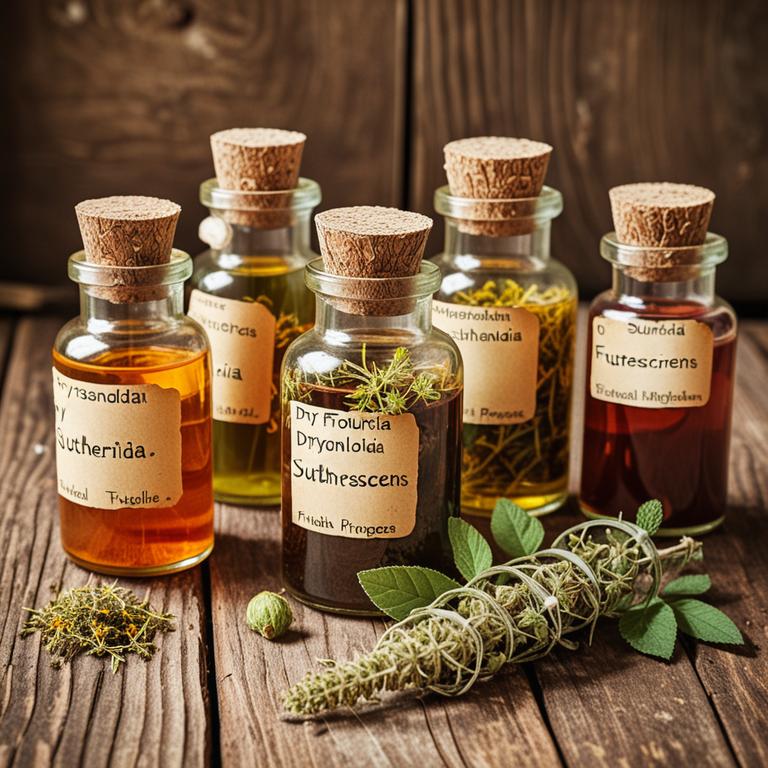
Sutherlandia frutescens herbal tinctures are used to support immune function and promote overall wellness.
They are commonly utilized in traditional African medicine to address ailments related to fatigue, stress, and general debility. The tinctures are believed to contain bioactive compounds that may enhance vitality and aid in recovery from illness. Their adaptogenic properties help the body cope with physical and emotional stressors, making them a popular choice for those seeking natural health support.
Due to their potential to balance bodily functions and boost energy levels, sutherlandia frutescens tinctures are increasingly sought after in holistic health practices.
44. Sanguisorba officinalis

Sanguisorba officinalis herbal tinctures are used to support digestive health by promoting the secretion of digestive enzymes and reducing bloating.
They are also valued for their anti-inflammatory properties, which can help alleviate symptoms of conditions such as gastritis and irritable bowel syndrome. These tinctures are often incorporated into herbal formulations to aid in detoxification and support the liver's natural cleansing processes. Their mild tonic effect makes them suitable for long-term use in maintaining overall vitality and balance within the body.
Due to their gentle yet effective nature, sanguisorba officinalis tinctures are increasingly favored in holistic and alternative medicine practices.
45. Rhus toxicaria
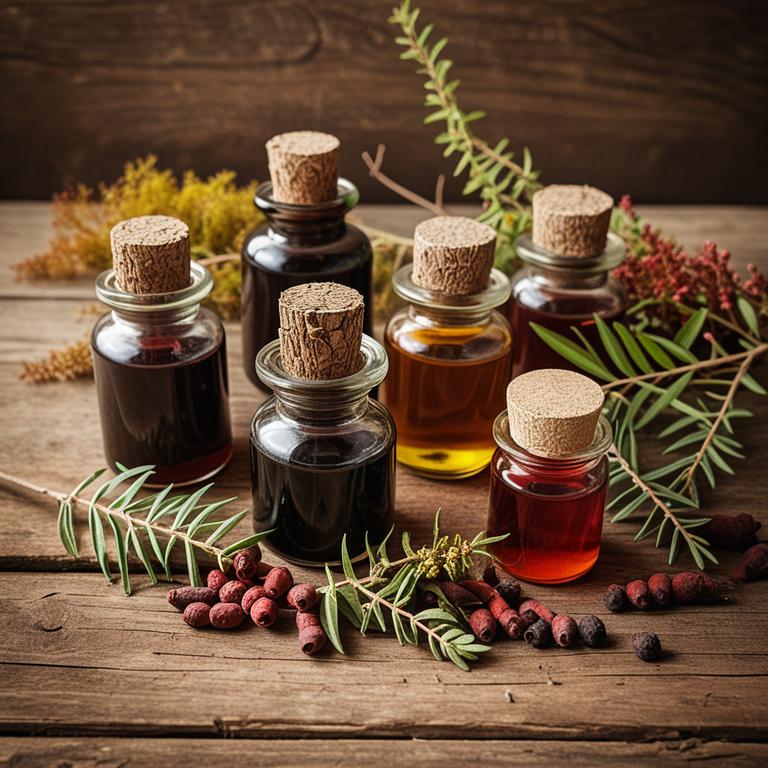
Rhus toxicaria herbal tinctures are used to alleviate symptoms of skin irritations and allergic reactions due to their anti-inflammatory and antihistaminic properties.
They are commonly applied topically to reduce redness, itching, and swelling associated with conditions like eczema, psoriasis, and contact dermatitis. The tinctures may also be used internally in diluted forms to help manage fever and joint pain, as they are believed to have a cooling effect on the body. Their historical use in homeopathy suggests a role in supporting the body's natural healing processes.
Overall, rhus toxicaria tinctures are valued for their versatility in addressing both external and internal health concerns.
46. Piper methysticum
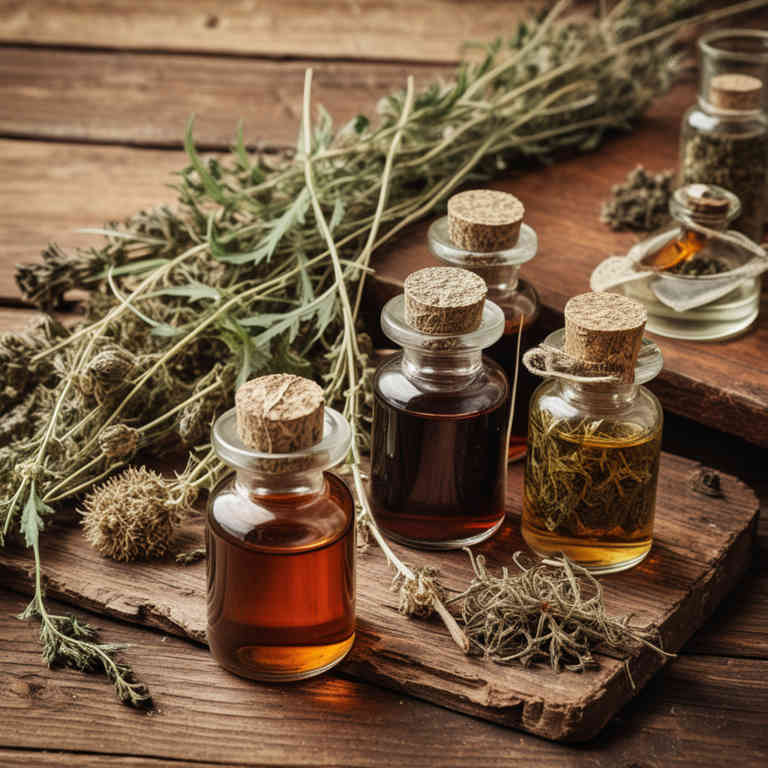
Piper methysticum herbal tinctures are used to promote relaxation and reduce stress by enhancing mood and inducing a sense of calm.
These tinctures are often utilized in traditional practices for their calming effects, which can help alleviate anxiety and improve mental well-being. They are also valued for their potential to enhance spiritual experiences and support meditation by fostering a deeper state of focus and introspection. The active compounds in piper methysticum, such as kavalactones, contribute to its ability to interact with the central nervous system, making it effective for both physical and emotional balance.
Due to these properties, piper methysticum tinctures are increasingly sought after for their holistic health benefits in modern wellness routines.
47. Thuja occidentalis
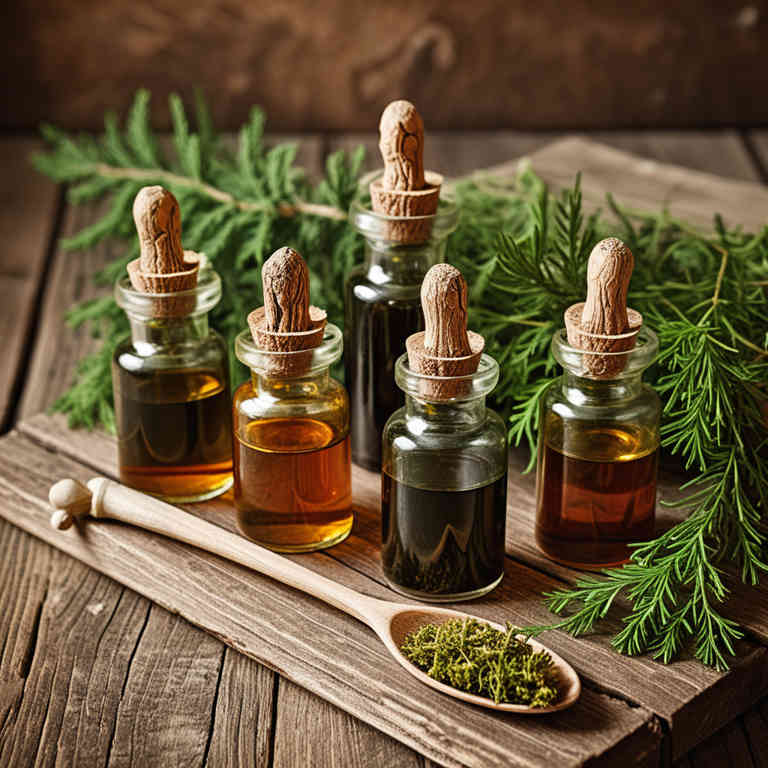
Thuja occidentalis herbal tinctures are used to support respiratory health by helping to alleviate symptoms of colds, flu, and bronchitis due to their antimicrobial and anti-inflammatory properties.
They are also commonly used to treat warts and skin conditions because of their ability to stimulate the immune system and promote cellular regeneration. Additionally, these tinctures are often incorporated into holistic treatments for detoxification and to support the body's natural cleansing processes. Their high concentration of active compounds, such as alpha-pinene and thuja acid, makes them effective in addressing various ailments without the side effects of synthetic medications.
As a result, thuja occidentalis tinctures remain a popular choice in alternative medicine for their versatile therapeutic applications.
48. Plantago lanceolata

Plantago lanceolata herbal tinctures are used to support respiratory and digestive health due to their anti-inflammatory and soothing properties.
These tinctures are often employed to alleviate symptoms of coughs, bronchitis, and other respiratory conditions by reducing irritation and mucus production in the airways. They are also valued for their ability to promote healthy digestion by soothing the gastrointestinal tract and reducing inflammation. Additionally, plantago lanceolata tinctures are used topically to treat skin irritations and minor wounds because of their healing and antimicrobial effects.
Their versatility makes them a popular choice in herbal medicine for both internal and external applications.
49. Cimicifuga racemosa
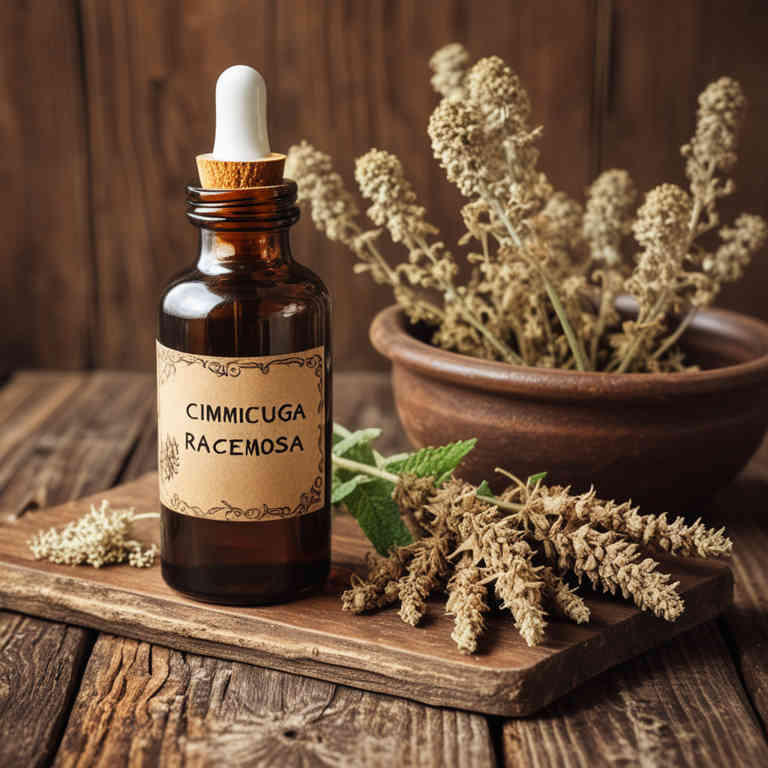
Cimicifuga racemosa herbal tinctures are used to support hormonal balance, particularly in women experiencing menopausal symptoms such as hot flashes, mood swings, and sleep disturbances.
These tinctures contain phytoestrogens that may help alleviate estrogen deficiency by mimicking the body's natural hormones, offering a natural alternative to conventional hormone replacement therapy. They are also commonly used to address menstrual irregularities, premenstrual syndrome, and breast discomfort, promoting overall reproductive health. The adaptogenic properties of cimicifuga racemosa may enhance stress resilience and contribute to emotional well-being.
Due to their historical use in traditional medicine and growing scientific interest, these tinctures are increasingly sought after for their potential to support hormonal health without the side effects associated with synthetic medications.
50. Hydrastis canadensis

Hydrastis canadensis herbal tinctures are used to support digestive health by stimulating the production of digestive enzymes and improving nutrient absorption.
They are also valued for their antimicrobial properties, which can help combat oral infections and maintain healthy gums. These tinctures are often incorporated into natural remedies for skin conditions due to their anti-inflammatory and astringent effects. Their ability to enhance the immune system makes them a popular choice for supporting overall wellness.
Due to their versatility and potency, hydrastis canadensis tinctures are widely used in herbal medicine for both preventive and therapeutic purposes.
51. Eucalyptus globulus
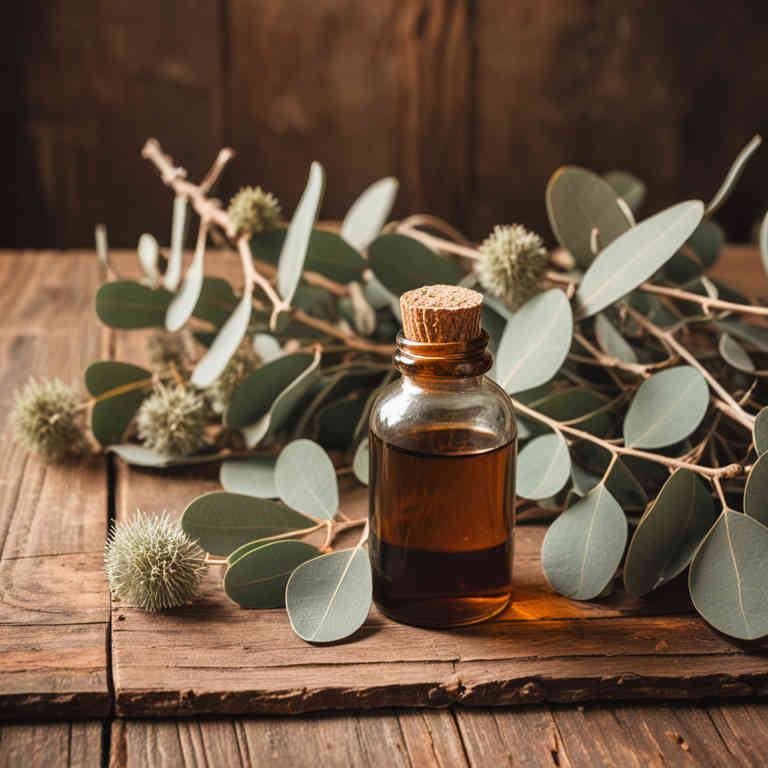
Eucalyptus globulus herbal tinctures are used to support respiratory health by helping to alleviate symptoms of colds, coughs, and bronchitis due to their expectorant and anti-inflammatory properties.
These tinctures can also be applied topically to relieve muscle aches, joint pain, and minor skin irritations because of their analgesic and antiseptic effects. They are often incorporated into aromatherapy practices to promote mental clarity and reduce stress, thanks to their invigorating and calming aromas. Additionally, eucalyptus globulus tinctures may aid in digestive health by stimulating the production of digestive enzymes and reducing bloating.
Their versatility and natural potency make them a valuable remedy in both traditional and modern holistic medicine.
52. Rhodiola rosea
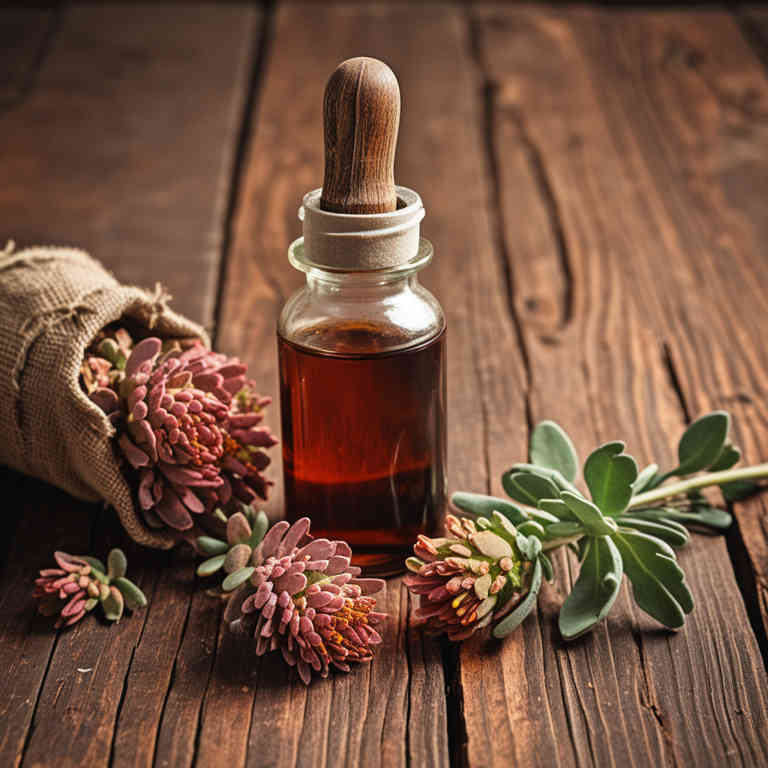
Rhodiola rosea herbal tinctures are used to enhance physical and mental performance by supporting energy levels and reducing fatigue.
They are commonly taken to improve cognitive function, including focus, memory, and mental clarity, making them popular among students and professionals. These tinctures are also valued for their adaptogenic properties, which help the body manage stress and promote emotional balance. Additionally, they are used to support overall well-being by boosting the immune system and improving resistance to environmental stressors.
Due to their natural composition and broad range of benefits, rhodiola rosea tinctures are increasingly sought after as a holistic approach to health and vitality.
53. Lepidium meyenii

Lepidium meyenii herbal tinctures are used to support digestive health by stimulating the production of gastric juices and enhancing nutrient absorption.
They are also valued for their potential to reduce inflammation and support the immune system due to their high concentration of bioactive compounds. These tinctures are often used in traditional medicine to alleviate symptoms of gastrointestinal disorders such as indigestion and bloating. The unique alkaloid content in lepidium meyenii contributes to its efficacy in promoting overall digestive wellness.
Because of these properties, lepidium meyenii tinctures are increasingly sought after for their natural and holistic approach to health maintenance.
54. Valeriana officinalis
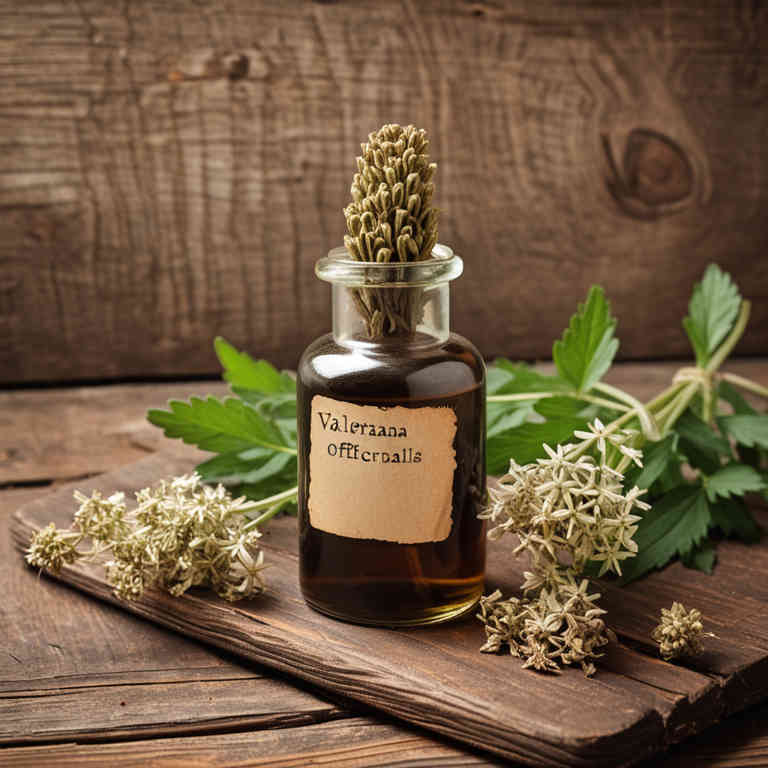
Valeriana officinalis herbal tinctures are used to promote relaxation and improve sleep quality by calming the nervous system.
These tinctures contain compounds such as valeric acid and essential oils that have sedative properties, making them effective for reducing anxiety and stress. They are often recommended for individuals suffering from insomnia or other sleep disorders due to their ability to ease the transition into restful sleep. Additionally, valeriana officinalis tinctures may help alleviate symptoms of mild depression and migraines by balancing mood and reducing tension.
Their natural composition makes them a popular alternative to pharmaceutical sedatives, offering a safer and more holistic approach to managing stress and sleep issues.
55. Calendula officinalis
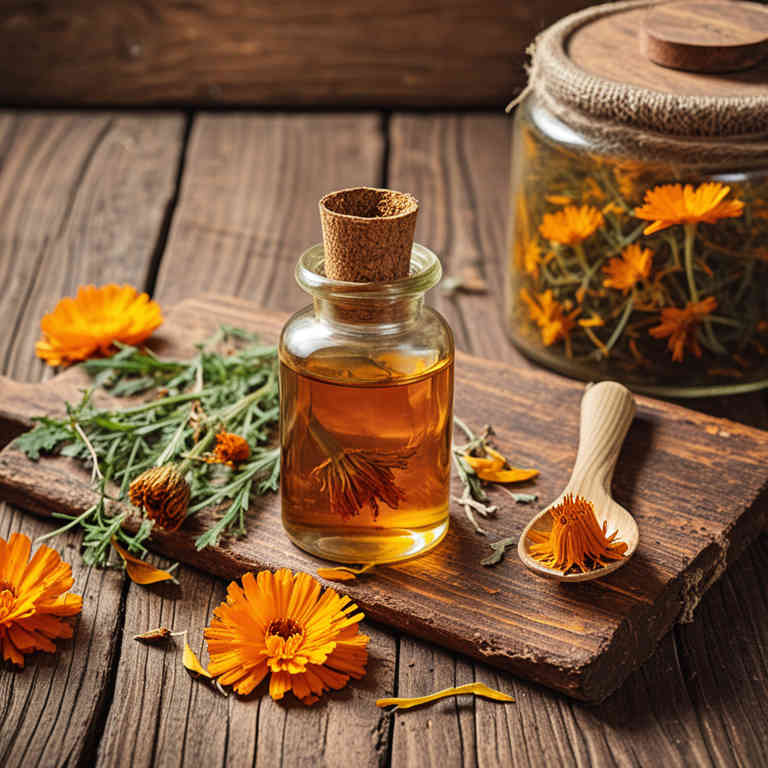
Calendula officinalis herbal tinctures are used to promote skin health and treat a variety of dermatological issues due to their anti-inflammatory and antiseptic properties.
These tinctures are commonly applied topically to reduce redness, soothe irritations, and accelerate the healing of wounds, cuts, and minor burns. They are also valued for their ability to moisturize and soften the skin, making them beneficial for conditions like eczema and psoriasis. Additionally, calendula tinctures are often used in natural skincare products for their gentle yet effective action on sensitive skin.
Their versatility and mild nature make them a popular choice for both traditional and modern holistic health practices.
56. Leonurus cardiaca
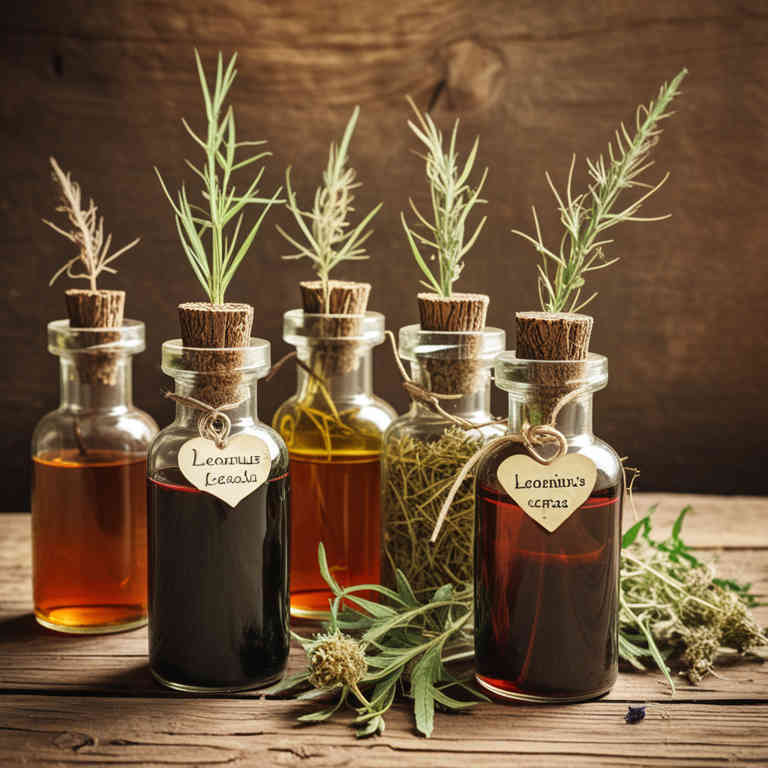
Leonurus cardiaca herbal tinctures are used to support cardiovascular health by promoting healthy blood circulation and regulating heart function.
They are commonly employed in traditional herbal medicine to address symptoms related to arrhythmia, hypertension, and peripheral vascular insufficiency. The active compounds in leonurus cardiaca, such as flavonoids and tannins, are believed to strengthen blood vessels and improve cardiac output. These tinctures are also valued for their calming properties, which may help reduce stress-induced heart palpitations.
Due to their natural composition and historical use, leonurus cardiaca tinctures are often sought as complementary therapy in holistic approaches to heart health.
57. Artemisia annua

Artemisia annua herbal tinctures are used to treat parasitic infections and support immune health due to their high concentration of artemisinin, a compound with potent antimalarial properties.
These tinctures are particularly valued in traditional medicine for their ability to combat malaria, a disease caused by Plasmodium parasites transmitted through mosquito bites. The active compounds in artemisia annua also exhibit anti-inflammatory and antioxidant effects, making them useful in managing conditions like fever and digestive issues. Additionally, they are sometimes used as a natural remedy for respiratory ailments and to enhance overall vitality.
Their effectiveness and accessibility have made them an important alternative or complementary treatment in regions where conventional antimalarial drugs may be limited.
58. Satureja hortensis
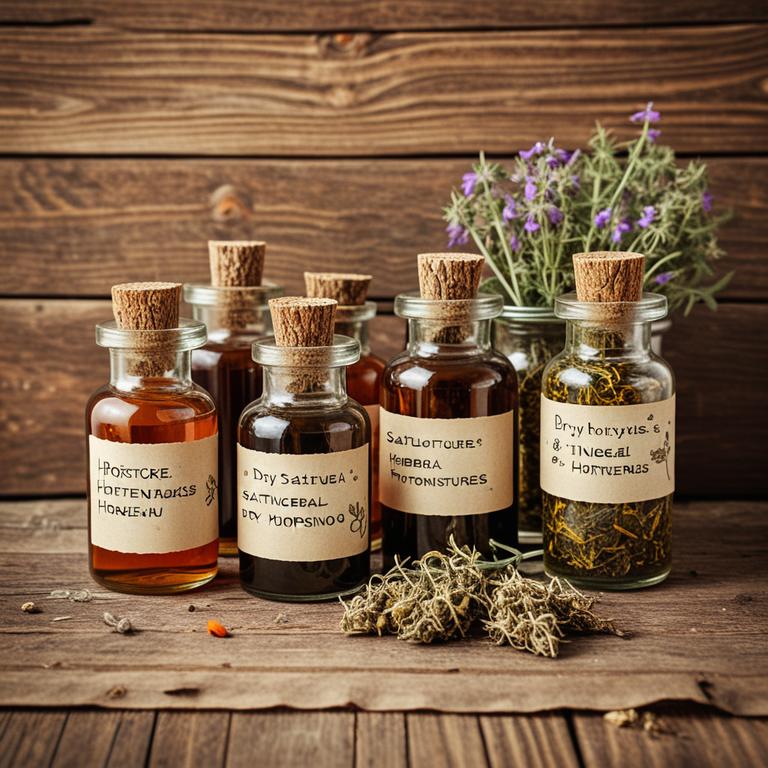
Satureja hortensis herbal tinctures are used to support digestive health by stimulating the production of digestive enzymes and reducing bloating and gas.
They are also valued for their antimicrobial properties, which can help in treating minor infections and promoting oral health. These tinctures are often incorporated into traditional medicine for their ability to relieve muscle pain and inflammation due to their analgesic and anti-inflammatory effects. Additionally, they are used to enhance mental clarity and reduce stress, thanks to their calming and mood-balancing properties.
Overall, the versatility and therapeutic benefits of satureja hortensis make it a valuable herbal remedy in both modern and traditional health practices.
59. Prunus domestica

Prunus domestica herbal tinctures are used to support digestive health by promoting the secretion of digestive enzymes and reducing gastrointestinal discomfort.
These tinctures are also valued for their antioxidant properties, which help neutralize free radicals and support immune function. They may aid in reducing inflammation, making them beneficial for individuals with conditions like irritable bowel syndrome or inflammatory bowel disease. Additionally, prunus domestica tinctures are sometimes used topically to treat skin irritations and wounds due to their antimicrobial and healing properties.
Their versatility in both internal and external applications makes them a popular choice in herbal medicine for a wide range of health concerns.
60. Agrimonia eupatoria

Agrimonia eupatoria herbal tinctures are used to support digestive health by promoting the secretion of digestive enzymes and reducing gastrointestinal discomfort.
They are also valued for their anti-inflammatory properties, which can help alleviate symptoms of conditions like gastritis and irritable bowel syndrome. Additionally, these tinctures are commonly used to address mild anxiety and nervousness due to their calming effects on the nervous system. The presence of compounds like tannins and flavonoids contributes to their efficacy in soothing the mucous membranes.
Overall, agrimonia eupatoria tinctures are favored for their natural approach to enhancing wellness and supporting overall bodily functions.
61. Solanum tuberosum

Solanum tuberosum herbal tinctures are used to support digestive health by stimulating appetite and aiding in the treatment of digestive disorders such as indigestion and bloating.
These tinctures are also valued for their potential to alleviate symptoms of respiratory conditions like coughs and bronchitis due to their expectorant properties. Additionally, they are employed in traditional medicine to reduce inflammation and ease muscle pain, making them useful for treating conditions like arthritis. The active compounds in these tinctures, such as alkaloids and glycosides, contribute to their medicinal effects by interacting with the body's systems to promote healing and balance.
Their versatility and historical use in herbal practices make solanum tuberosum tinctures a valuable resource in both traditional and complementary medicine.
62. Cymbopogon citratus
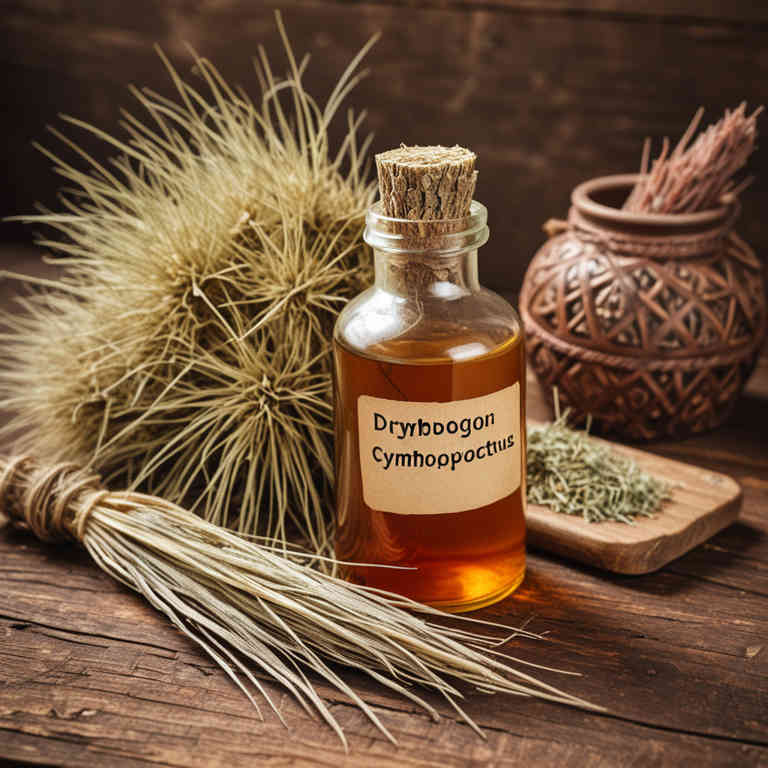
Cymbopogon citratus herbal tinctures are used to promote relaxation and reduce stress due to their calming properties.
These tinctures are often incorporated into aromatherapy practices to enhance mood and alleviate anxiety. They are also utilized in digestive health support, helping to ease nausea and improve appetite. Additionally, cymbopogon citratus tinctures may aid in respiratory wellness by acting as a natural decongestant.
Their versatility makes them a valuable component in both traditional and modern holistic health approaches.
63. Allium sativum
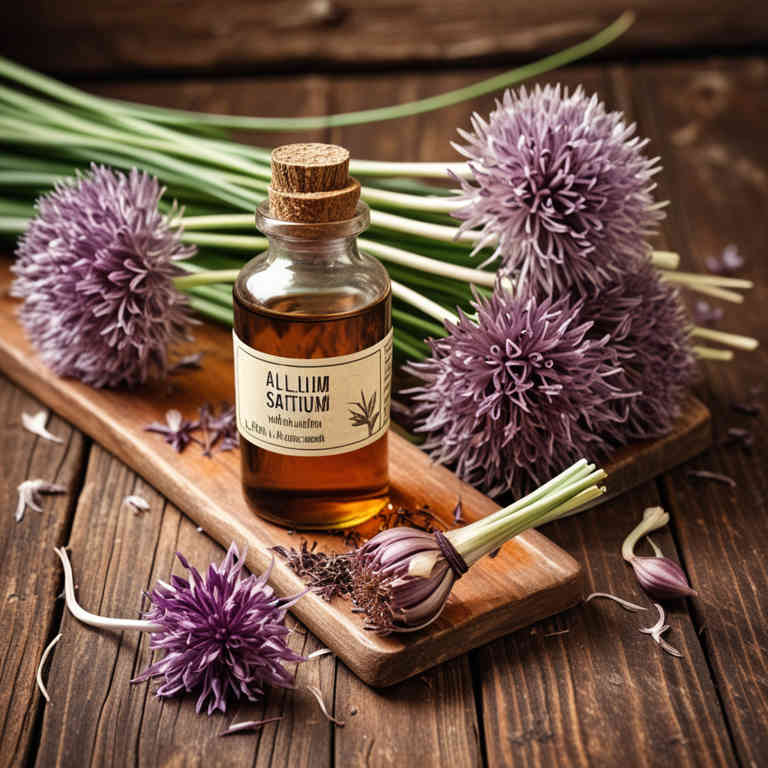
Allium sativum herbal tinctures are used to support cardiovascular health by helping to lower blood pressure and improve circulation.
They are also valued for their antimicrobial properties, which can aid in reducing the risk of infections and promoting digestive health. These tinctures are often incorporated into traditional medicine practices for their potential anti-inflammatory and immune-boosting effects. The active compounds in garlic, such as allicin, contribute to these therapeutic benefits by enhancing metabolic processes and reducing oxidative stress.
Due to their versatility and natural properties, allium sativum tinctures are widely used in both preventive and therapeutic herbal remedies.
64. Panax ginseng
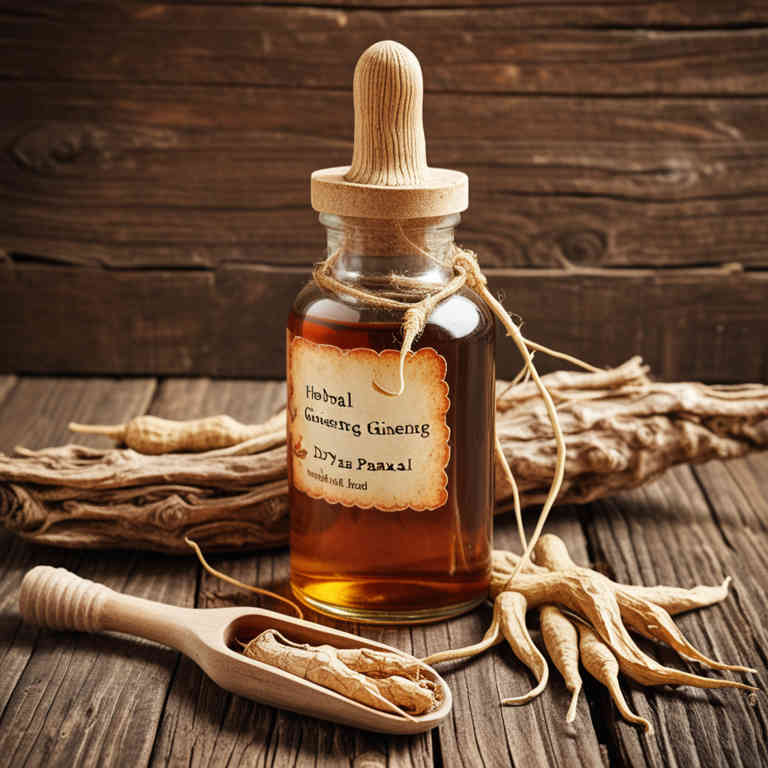
Panax ginseng herbal tinctures are used to enhance energy levels and support overall vitality by stimulating the central nervous system and improving cognitive function.
They are also commonly used to reduce stress and anxiety, as they contain adaptogenic compounds that help the body cope with physical and emotional challenges. These tinctures may aid in improving immune function by promoting the production of immune cells and enhancing the body's defense mechanisms. Additionally, they are used to support sexual health and increase libido, particularly in men, due to their potential effects on hormone regulation.
Because of their wide-ranging benefits, panax ginseng tinctures are often incorporated into holistic health regimens for their natural, long-term wellness support.
65. Boswellia serrata
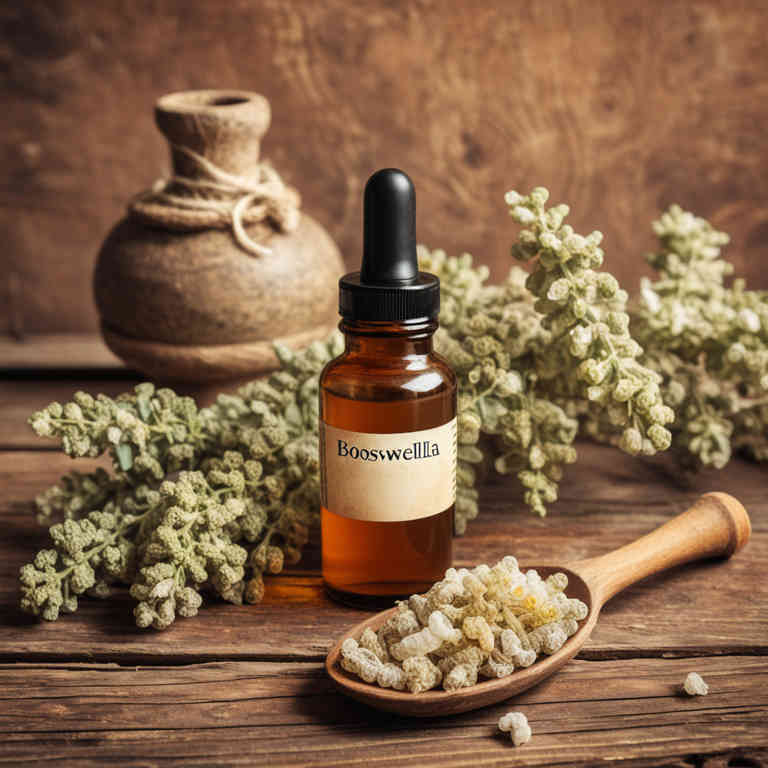
Boswellia serrata herbal tinctures are used to support joint health and reduce inflammation, making them a popular natural remedy for conditions like arthritis.
They contain active compounds called boswellic acids, which inhibit inflammatory responses in the body. These tinctures are also valued for their potential to alleviate symptoms of respiratory issues such as asthma and bronchitis. Their anti-inflammatory properties may help improve mobility and reduce pain in individuals with chronic inflammatory disorders.
Due to their mild side effect profile and natural origin, boswellia serrata tinctures are often preferred by those seeking alternative or complementary therapies.
66. Cannabis sativa

Cannabis sativa herbal tinctures are used to provide therapeutic relief for a variety of health conditions, including chronic pain, inflammation, and anxiety.
These tinctures contain cannabinoids such as CBD and THC, which interact with the body's endocannabinoid system to modulate physiological processes. They are often preferred for their precise dosing and ease of administration, making them a popular choice for both medical and wellness applications. Additionally, cannabis sativa tinctures are valued for their potential to improve sleep quality and reduce nausea, offering a natural alternative to conventional treatments.
Their versatility and efficacy make them a valuable tool in holistic and integrative medicine.
67. Nepeta cataria

Nepeta cataria herbal tinctures are used to promote relaxation and reduce anxiety due to their calming properties.
These tinctures are often incorporated into aromatherapy practices to ease stress and induce a sense of peace. They can also be used topically to alleviate muscle tension and soothe minor skin irritations. The active compounds in nepeta cataria, such as nepetalactone, contribute to its sedative and analgesic effects.
Because of these benefits, nepeta cataria tinctures are a popular choice for those seeking natural remedies for emotional and physical well-being.
68. Withania somnifera

Withania somnifera herbal tinctures are used to support overall wellness and promote balance within the body.
These tinctures are particularly valued for their adaptogenic properties, which help the body manage stress and enhance resilience. They are commonly used to alleviate symptoms of anxiety, fatigue, and insomnia by promoting relaxation and improving sleep quality. Additionally, they may aid in boosting immune function and supporting hormonal balance, making them beneficial for a wide range of health concerns.
Due to their holistic approach and natural composition, withania somnifera tinctures are increasingly sought after for their potential to enhance both physical and mental well-being.
69. Rhus toxicodendron
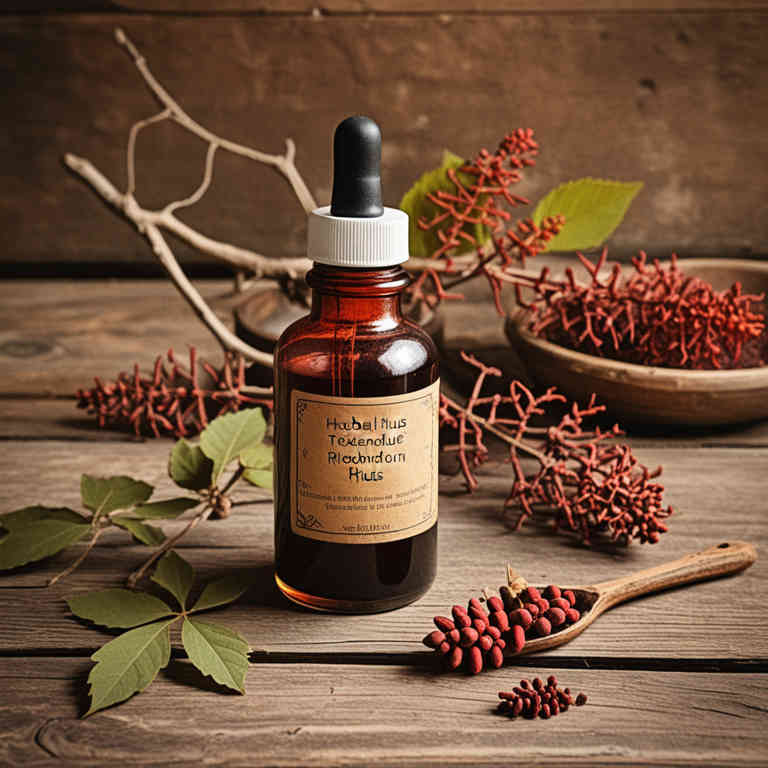
Rhus toxicodendron herbal tinctures are used to alleviate symptoms of skin conditions such as eczema, psoriasis, and contact dermatitis by reducing inflammation and itching.
They are particularly effective for cases where the skin is red, swollen, and covered with a dry, flaky rash, often associated with an allergic reaction or environmental irritants. The tincture's antihistamine and anti-inflammatory properties help soothe the skin and promote healing. It is also commonly used in homeopathic treatments for joint pain and muscle aches, as it is believed to stimulate the body's natural healing processes.
Due to its potency, it is typically diluted before use to ensure safety and efficacy.
70. Tribulus terrestris
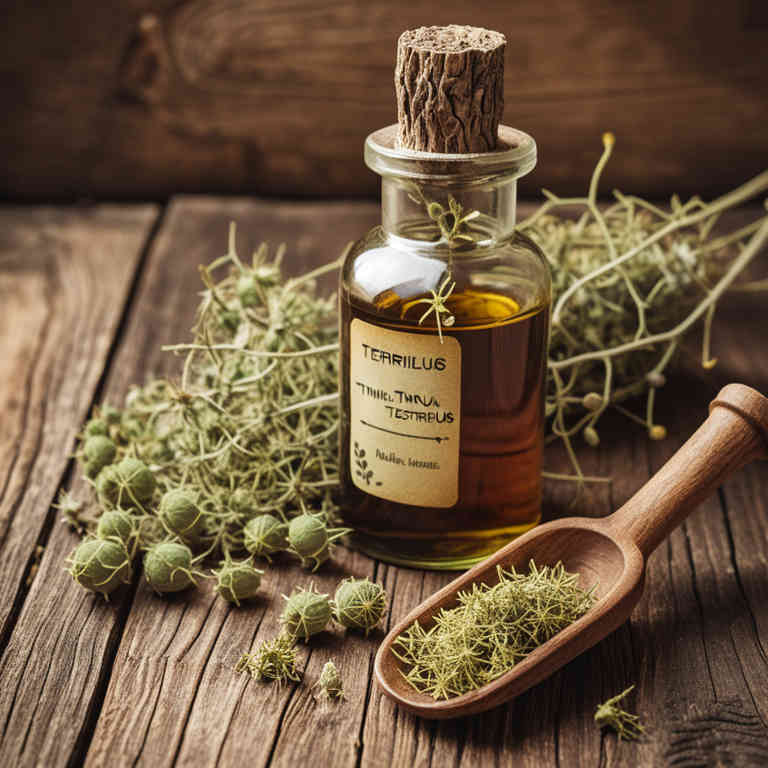
Tribulus terrestris herbal tinctures are used to support sexual health and enhance physical performance by stimulating the production of testosterone in the body.
They are commonly taken by athletes and bodybuilders to improve strength, endurance, and muscle growth. Additionally, these tinctures may help with libido enhancement, making them popular among individuals seeking to boost their sexual vitality. The natural compounds in Tribulus terrestris are believed to support overall vitality and energy levels, contributing to better physical and mental well-being.
Due to their potential benefits, they are often used as a natural supplement in traditional medicine systems and modern wellness practices.
71. Plantago major

Plantago major herbal tinctures are used to support digestive health by soothing inflammation in the gastrointestinal tract.
They are often incorporated into herbal remedies for their ability to reduce irritation and promote healing in conditions like gastritis and irritable bowel syndrome. These tinctures also serve as a natural remedy for respiratory issues, helping to alleviate coughs and ease bronchial congestion. Their high content of mucilage and bioactive compounds makes them effective in reducing inflammation and supporting mucous membrane health.
Due to their versatility and mild yet potent properties, plantago major tinctures are valued in both traditional and modern herbal medicine practices.
72. Pelargonium graveolens

Pelargonium graveolens herbal tinctures are used to support respiratory health by alleviating symptoms of coughs, colds, and bronchitis due to their expectorant and anti-inflammatory properties.
These tinctures are also valued for their ability to reduce stress and anxiety, as they contain compounds that promote relaxation and improve mood. Additionally, pelargonium graveolens tinctures are often used topically to relieve skin irritations and insect bites because of their antimicrobial and soothing effects. Their essential oil content, rich in geraniol and linalool, contributes to their therapeutic benefits.
Overall, the versatility and potency of pelargonium graveolens tinctures make them a popular choice in both traditional and modern herbal medicine.
73. Cyperus rotundus
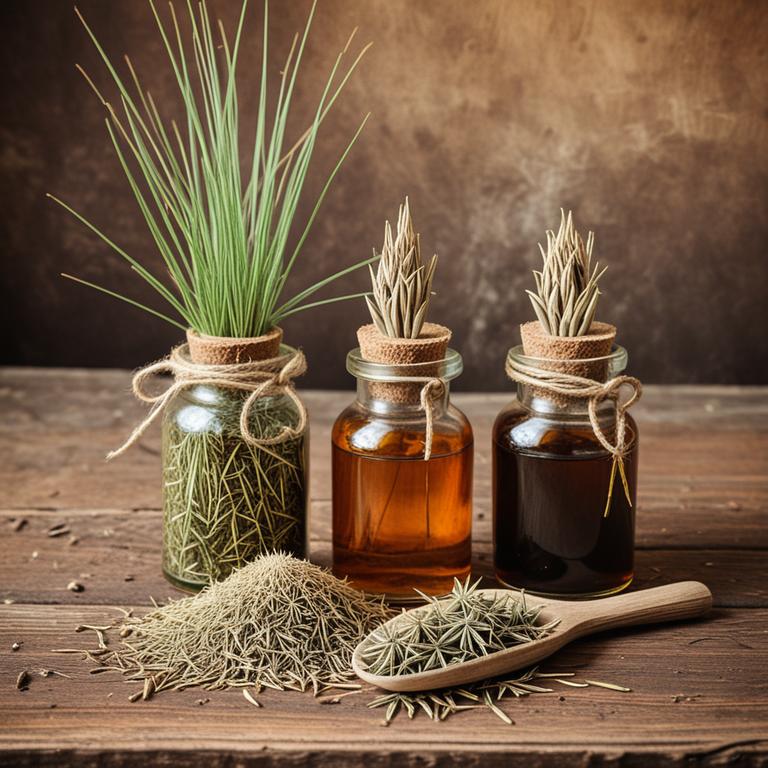
Cyperus rotundus herbal tinctures are used to support digestive health by promoting healthy bowel movements and alleviating symptoms of indigestion.
These tinctures are also valued for their potential to reduce inflammation and ease joint pain, making them a popular remedy in traditional medicine. The active compounds in Cyperus rotundus, such as flavonoids and alkaloids, are believed to contribute to its efficacy in treating various ailments. Additionally, they are used to address menstrual discomfort and hormonal imbalances due to their phytoestrogenic properties.
Overall, the versatility and historical use of Cyperus rotundus tinctures make them a valuable natural remedy in both conventional and alternative medicine practices.
74. Plantago ovata

Plantago ovata herbal tinctures are used to support digestive health and promote regular bowel movements due to their high mucilage content, which helps soften stool and ease digestion.
They are particularly beneficial for individuals suffering from constipation, as the mucilage acts as a natural lubricant in the intestines. Additionally, these tinctures may help reduce inflammation in the gastrointestinal tract, making them useful for those with irritable bowel syndrome or other digestive disorders. Their mild nature also makes them a safe option for long-term use, supporting overall gut wellness.
Overall, plantago ovata tinctures are a versatile and effective herbal remedy for improving digestive function and maintaining intestinal health.
75. Siberian ginseng
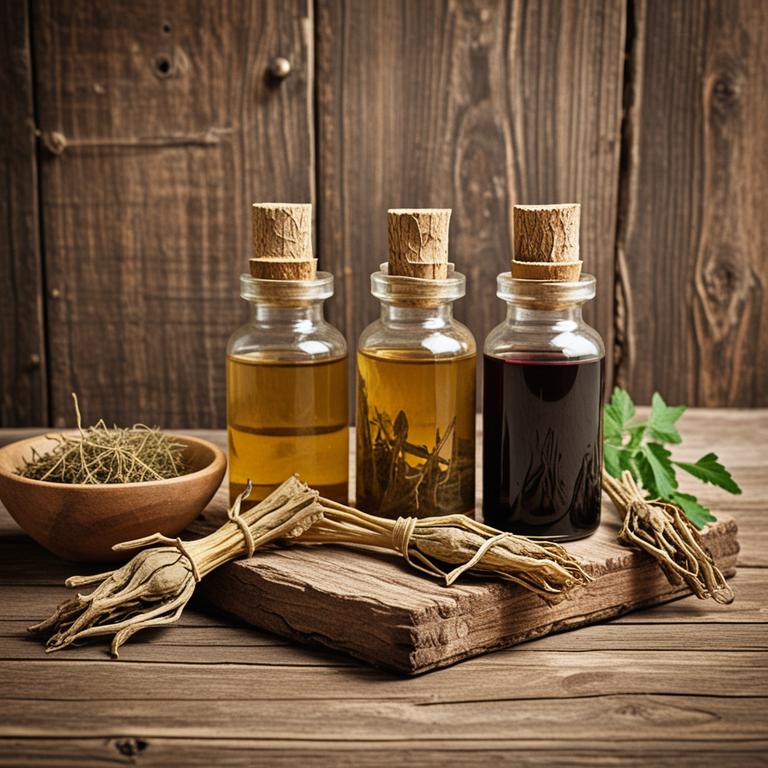
Siberian ginseng herbal tinctures are used to enhance energy levels and reduce fatigue by stimulating the body's natural production of stress-resistant hormones.
They are also commonly used to support the immune system, as they contain adaptogenic compounds that help the body cope with physical and emotional stress. These tinctures may aid in improving mental clarity and cognitive function, making them popular among students and professionals seeking to maintain focus and productivity. Additionally, Siberian ginseng is believed to have mild anti-inflammatory properties, which can contribute to overall wellness and recovery from illness.
Due to their adaptogenic nature, these tinctures are valued for their ability to help balance the body's systems and promote resilience against environmental stressors.
76. Paeonia lactiflora

Paeonia lactiflora herbal tinctures are used to support respiratory health by easing symptoms of coughs and colds due to their expectorant properties.
They are also valued for their calming effects, making them useful in reducing anxiety and promoting relaxation. These tinctures may help in managing menstrual discomfort by alleviating cramps and regulating hormonal imbalances. Additionally, they are often used topically to soothe skin irritations and reduce inflammation.
The versatility of paeonia lactiflora tinctures stems from their rich composition of bioactive compounds, which contribute to their wide range of therapeutic benefits.
77. Centella asiatica
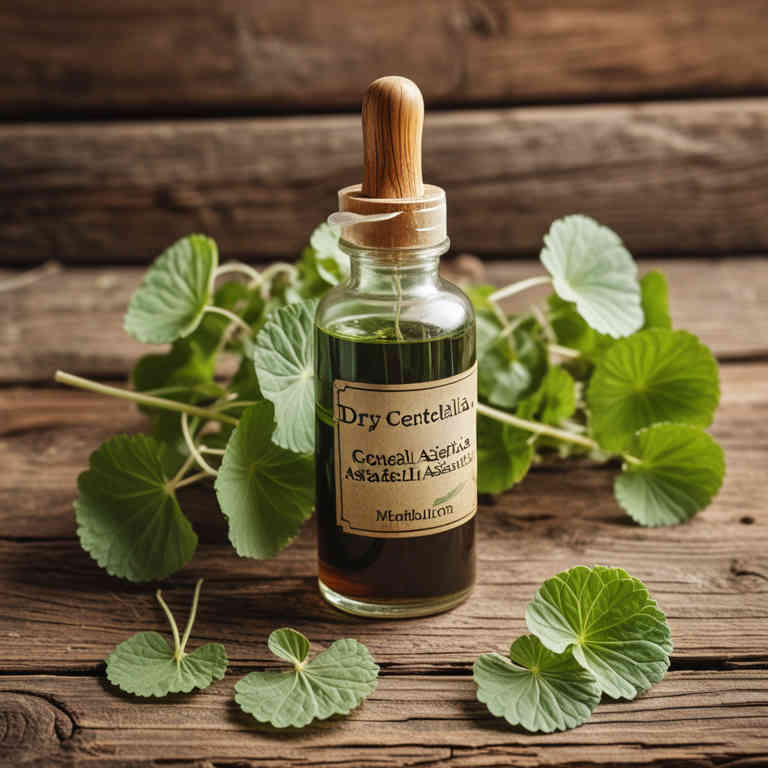
Centella asiatica herbal tinctures are used to promote wound healing and skin regeneration due to their rich content of active compounds like asiatic acid and madecassic acid.
These compounds help stimulate collagen production, which enhances the skin's structural integrity and accelerates the repair of damaged tissue. They are also valued for their ability to improve circulation and reduce inflammation, making them beneficial for treating conditions such as eczema, psoriasis, and varicose veins. Additionally, centella asiatica tinctures are often used in traditional medicine to support cognitive function and reduce stress-related symptoms.
Their versatility and natural origin make them a popular choice for those seeking holistic and effective herbal remedies.
78. Nelumbo nucifera

Nelumbo nucifera herbal tinctures are used to support mental clarity and emotional balance due to their calming and sedative properties.
These tinctures are often incorporated into traditional medicine practices to alleviate symptoms of anxiety, insomnia, and stress-related disorders. The active compounds in the tinctures, such as alkaloids and flavonoids, are believed to interact with the central nervous system to promote relaxation and improve sleep quality. Additionally, they are valued for their potential to enhance cognitive function and reduce inflammation, making them beneficial for overall wellness.
Their versatility and long-standing use in Ayurvedic and Chinese medicine further underscore their significance in natural health remedies.
79. Taraxacum officinale
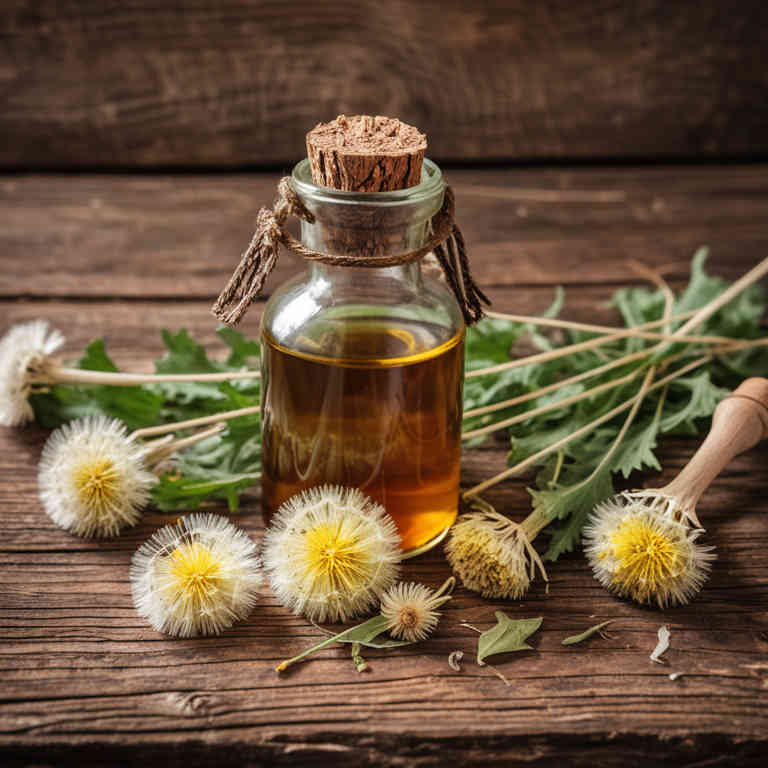
Taraxacum officinale herbal tinctures are used to support digestive health by stimulating bile production and improving liver function.
These tinctures are also valued for their diuretic properties, which can aid in detoxification and the management of fluid retention. They are often incorporated into herbal remedies for their ability to promote urinary tract health and reduce inflammation. Additionally, the bitter compounds in dandelion tinctures may enhance appetite and aid in the treatment of mild digestive disorders.
Due to their adaptogenic qualities, these tinctures are also believed to support overall vitality and immune function.
80. Althaea officinalis
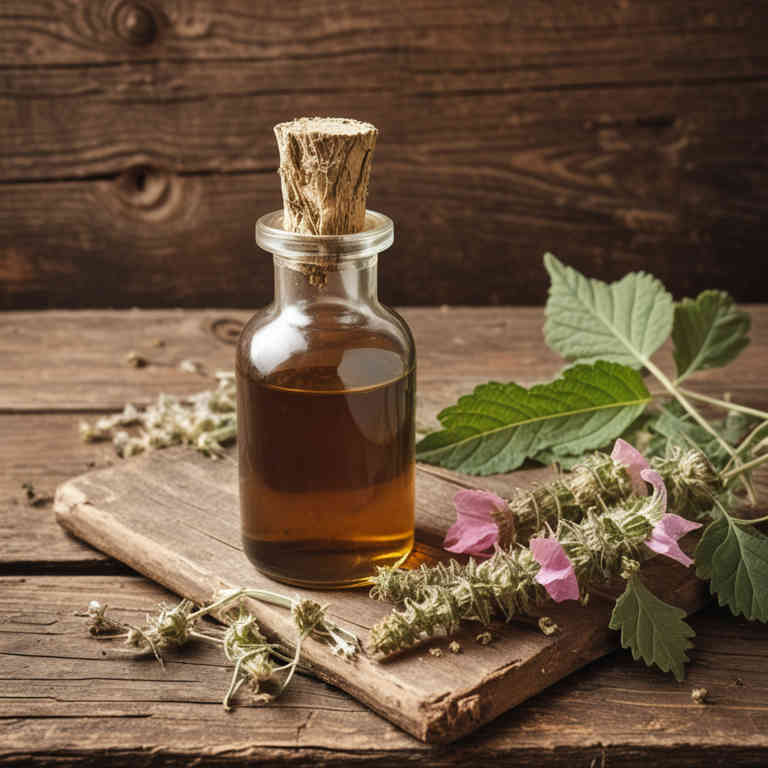
Althaea officinalis herbal tinctures are used to support respiratory health by soothing coughs and reducing inflammation in the airways.
They are particularly effective for alleviating symptoms of bronchitis, asthma, and other respiratory conditions due to their mucilage content, which forms a protective layer over irritated tissues. These tinctures also promote digestive health by acting as a mild demulcent, helping to ease discomfort in the throat and stomach. Their anti-inflammatory and antimicrobial properties make them beneficial for treating skin irritations and minor wounds.
Overall, althaea officinalis tinctures are valued for their gentle yet effective therapeutic properties that address a range of health concerns.
81. Aconitum napellus
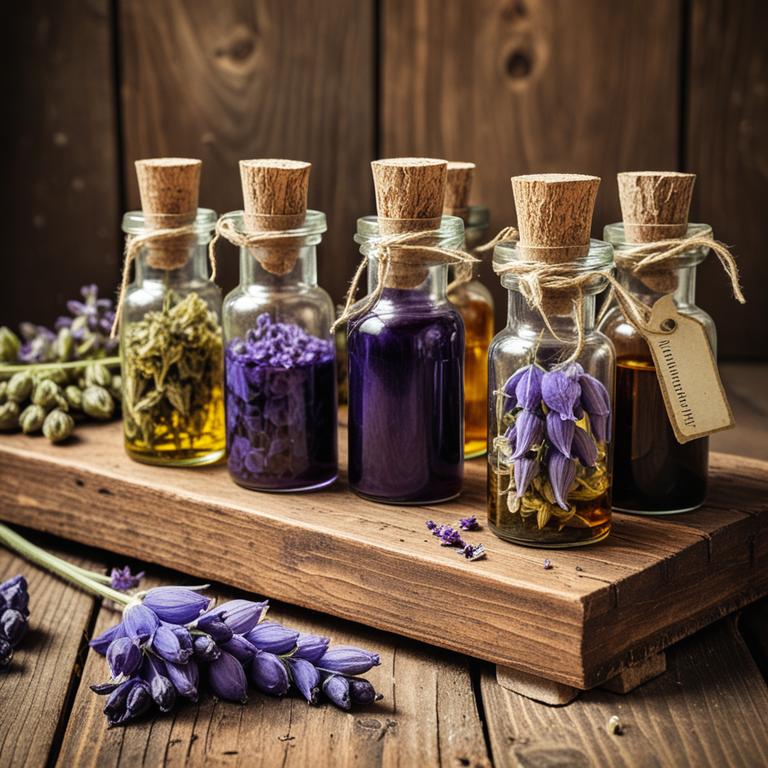
Aconitum napellus herbal tinctures are used to alleviate symptoms of anxiety and nervousness by promoting a calming effect on the central nervous system.
They are often recommended for individuals experiencing intense fear, restlessness, or insomnia, as they may help reduce the body's stress response. This herb is particularly effective in treating conditions related to emotional disturbances, such as panic attacks or generalized anxiety disorder. Its action is believed to be due to its ability to modulate neurotransmitter activity and reduce hyperexcitability.
However, due to its potent nature, it is typically prescribed under professional supervision to ensure safe and appropriate use.
82. Viburnum opulus

Viburnum opulus herbal tinctures are used to support digestive health and alleviate symptoms of gastrointestinal discomfort.
These tinctures are valued for their potential anti-inflammatory and antimicrobial properties, which may help in reducing intestinal inflammation and combating harmful pathogens. They are also traditionally used to promote liver function and detoxification, aiding in the body's natural cleansing processes. The presence of flavonoids and other bioactive compounds in viburnum opulus contributes to its efficacy in supporting overall wellness.
Due to these properties, viburnum opulus tinctures are increasingly sought after as a natural remedy for a variety of health concerns.
83. Bacopa monnieri
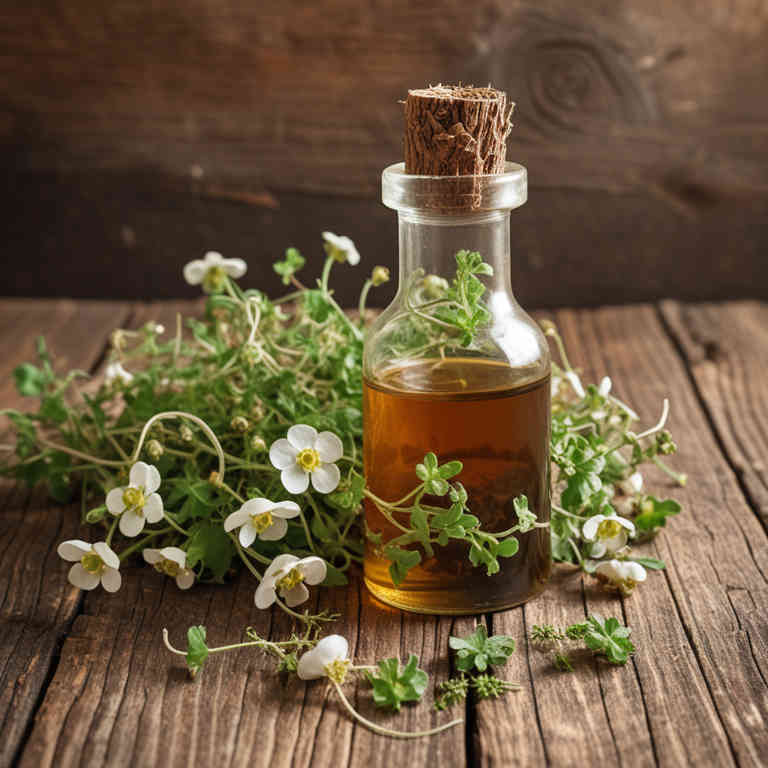
Bacopa monnieri herbal tinctures are used to enhance cognitive function and memory retention, making them popular among students and professionals seeking mental clarity.
These tinctures are believed to support the nervous system by increasing the transmission of nerve impulses, which can improve learning and concentration. Additionally, they are used to reduce anxiety and stress, promoting a sense of calm and emotional balance. The active compounds in bacopa monnieri, such as bacosides, are thought to protect brain cells from oxidative stress and enhance neural connectivity.
Because of these potential benefits, bacopa monnieri tinctures are often recommended as a natural supplement for mental performance and overall well-being.
84. Avena sativa
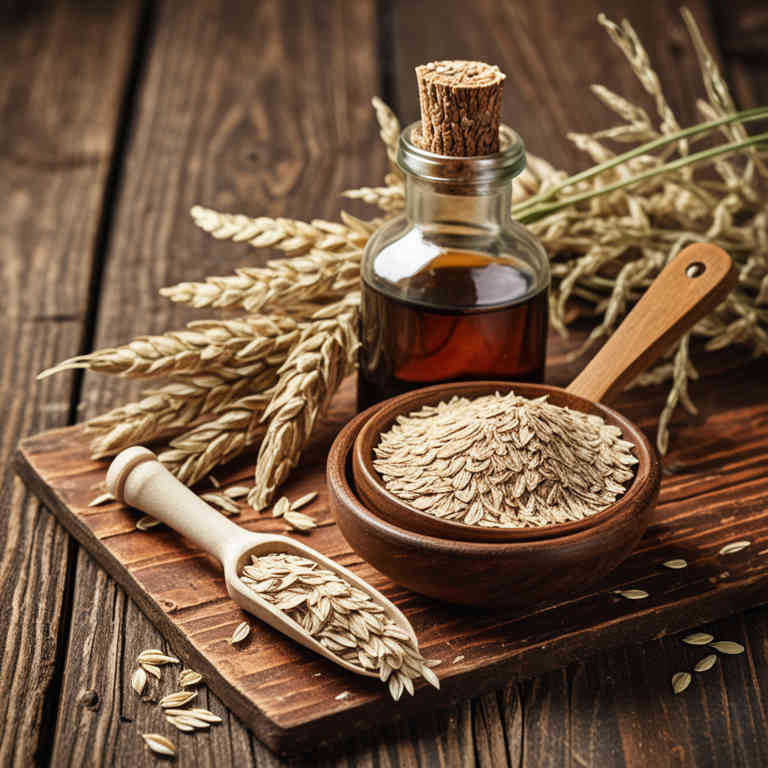
Avena sativa herbal tinctures are used to support overall health and wellness through their calming and nourishing properties.
These tinctures are commonly utilized to alleviate stress and anxiety by promoting relaxation and improving mood due to their high concentration of nutrients and bioactive compounds. They are also valued for their ability to support digestive health, as they can soothe the gastrointestinal tract and enhance nutrient absorption. Additionally, avena sativa tinctures are often incorporated into skincare routines to nourish and hydrate the skin, thanks to their rich content of vitamins and minerals.
Their versatility and natural composition make them a popular choice for those seeking holistic and natural remedies for various health concerns.
85. Pueraria lobata
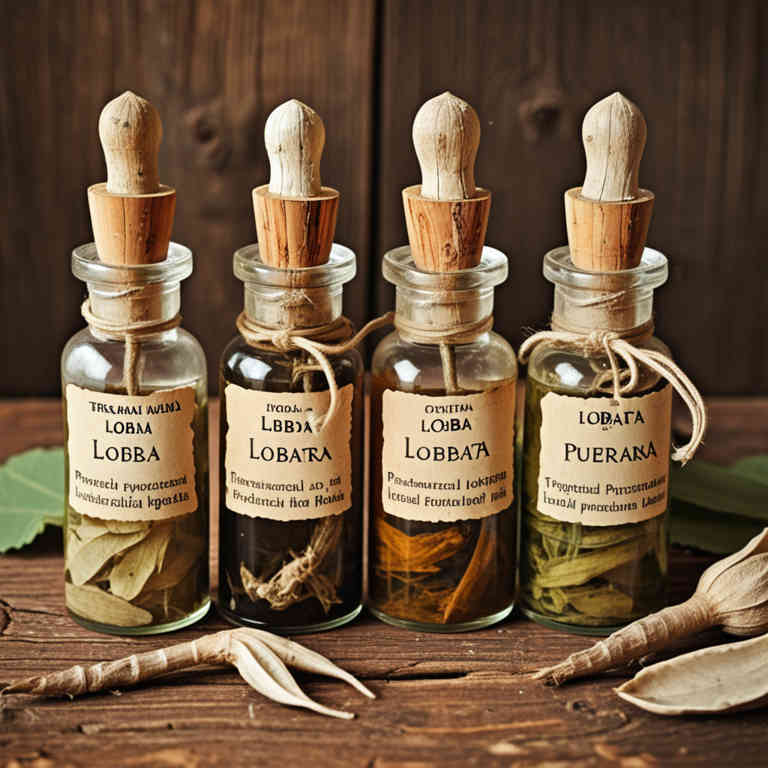
Pueraria lobata herbal tinctures are used to support hormonal balance, particularly in managing symptoms related to menopause and premenstrual syndrome.
These tinctures contain bioactive compounds like isoflavones, which have estrogen-like effects and can help alleviate hot flashes, mood swings, and other hormonal fluctuations. They are also valued for their potential to reduce inflammation and improve cognitive function, making them beneficial for overall wellness. Due to their adaptogenic properties, pueraria lobata tinctures are often used to enhance stress resilience and promote mental clarity.
Their versatility and natural origin make them a popular choice in alternative medicine for addressing a range of health concerns.
86. Cucurbita pepo
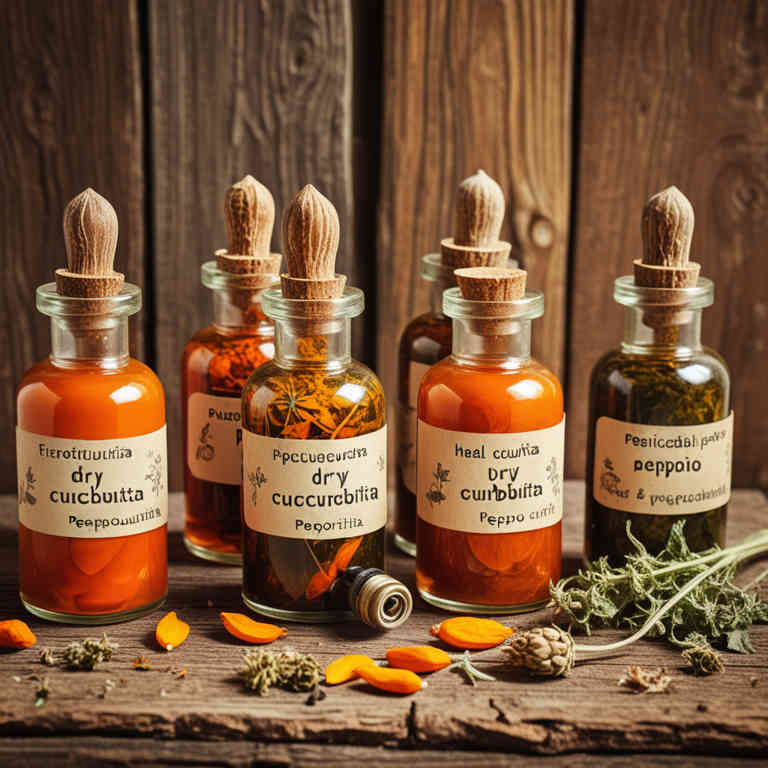
Cucurbita pepo herbal tinctures are used to support digestive health by stimulating bile production and aiding in the digestion of fats.
These tinctures are also valued for their anti-inflammatory properties, which can help alleviate symptoms of conditions such as arthritis and respiratory infections. Additionally, they are often used to promote liver function and detoxification, making them a popular choice in herbal medicine for overall wellness. The presence of compounds like cucurbitacin and antioxidants contributes to their effectiveness in reducing inflammation and supporting immune function.
Due to their versatility and natural composition, cucurbita pepo tinctures are widely utilized in both traditional and modern herbal practices.
87. Nux vomica
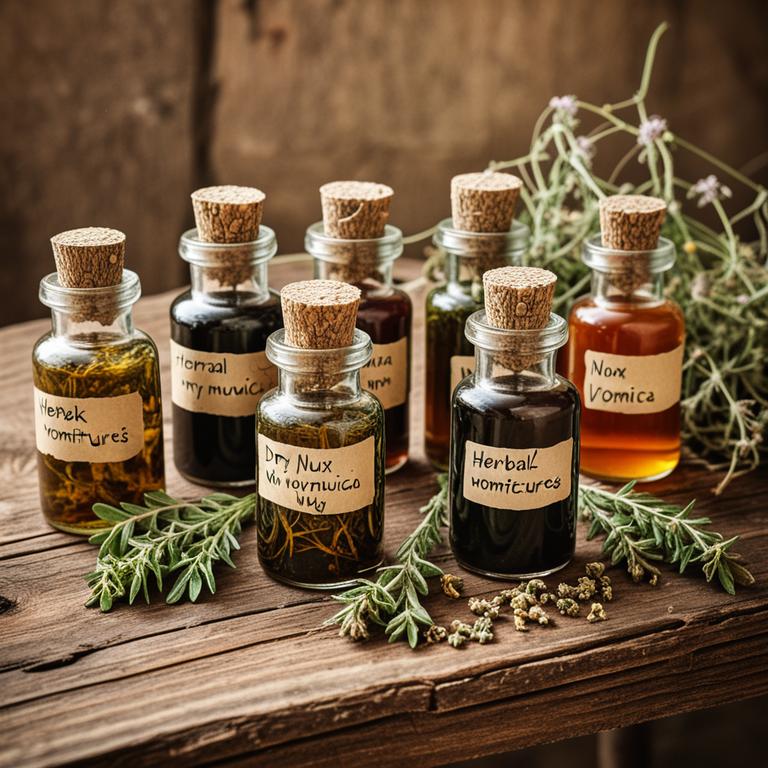
Nux vomica herbal tinctures are used to support digestive health by addressing issues such as indigestion, bloating, and constipation.
They are often employed in traditional medicine to stimulate the nervous system and improve overall bodily function. The active compounds in nux vomica, such as brucine and sanguinarine, are believed to have antispasmodic and analgesic properties that aid in relieving gastrointestinal discomfort. These tinctures are also used to treat headaches, migraines, and nervous tension due to their calming effects on the central nervous system.
Their versatility makes them a popular choice in both alternative and complementary medicine practices.
88. Crataegus oxyacantha

Crataegus oxyacantha herbal tinctures are used to support cardiovascular health by promoting healthy blood flow and strengthening the heart muscle.
These tinctures are often employed in traditional medicine to alleviate symptoms of hypertension and arrhythmia due to their ability to dilate blood vessels and improve circulation. The active compounds, such as flavonoids and triterpene acids, contribute to their cardioprotective properties by reducing oxidative stress and inflammation. Additionally, they are valued for their calming effects, making them useful in managing anxiety and stress-related conditions.
Their historical use in herbal medicine underscores their significance in both preventive and therapeutic applications.
89. Chamomile (matricaria chamomilla)
-tinctures.jpg)
Chamomile (Matricaria chamomilla) herbal tinctures are used to promote relaxation and ease anxiety by calming the nervous system through its mild sedative properties.
They are also commonly utilized to aid in sleep disorders, such as insomnia, due to their ability to soothe the mind and reduce restlessness. These tinctures may support digestive health by reducing inflammation and soothing gastrointestinal discomfort, making them beneficial for conditions like indigestion or irritable bowel syndrome. Additionally, chamomile tinctures are applied topically to treat skin irritations, such as eczema or minor burns, thanks to their anti-inflammatory and antiseptic qualities.
Overall, their versatility in both internal and external applications makes chamomile tinctures a popular choice for natural wellness and holistic health practices.
90. Strychnos nux-vomica
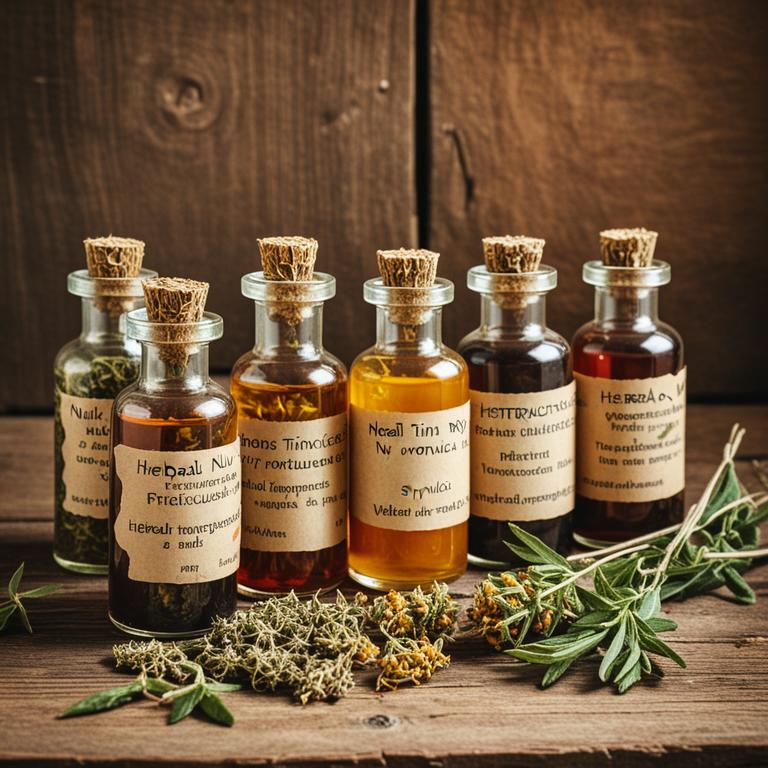
Strychnos nux-vomica herbal tinctures are used to stimulate the central nervous system and enhance mental alertness.
They are traditionally employed in traditional Chinese medicine to treat conditions such as asthma, coughs, and neuralgia due to their purported ability to improve circulation and reduce inflammation. The tinctures are also believed to aid in the treatment of digestive disorders by promoting the secretion of digestive enzymes. However, due to their potent and potentially toxic nature, they are typically used with extreme caution and under professional supervision.
Their use is controversial because of the risk of severe poisoning if not prepared or administered properly.
91. Saponaria officinalis
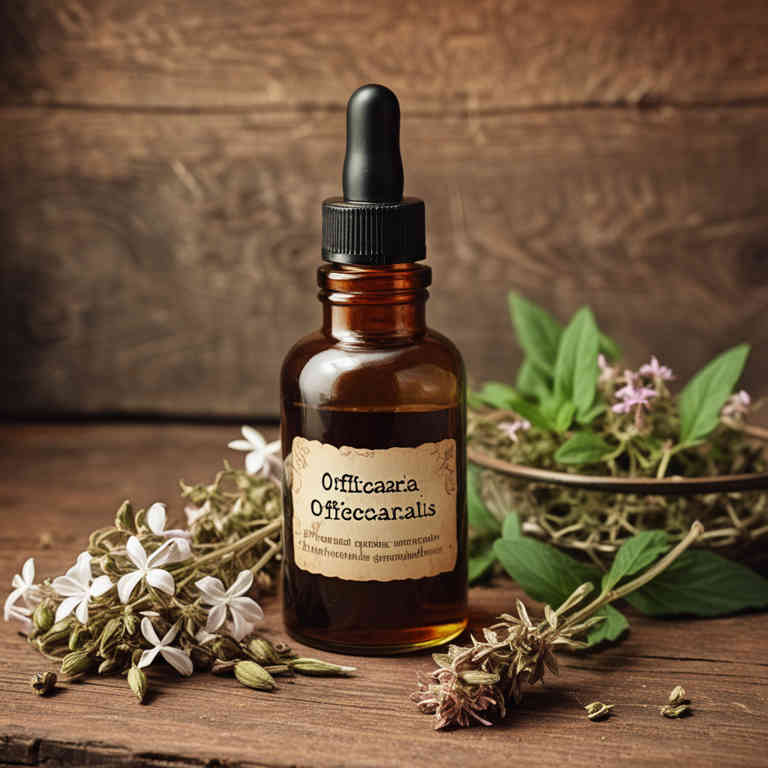
Saponaria officinalis herbal tinctures are used to support respiratory health by helping to clear mucus and soothe irritation in the throat and lungs.
They are also valued for their antimicrobial properties, which can help in treating minor skin infections and wounds. These tinctures are often incorporated into herbal remedies for digestive support, as they may aid in reducing inflammation and promoting healthy digestion. Their mild cleansing action makes them beneficial for detoxification purposes, supporting the body's natural processes.
Overall, saponaria officinalis tinctures are favored for their versatility and gentle yet effective therapeutic properties.
92. Turmeric (curcuma longa)
-tinctures.jpg)
Turmeric (curcuma longa) herbal tinctures are used to support overall health and wellness through their potent anti-inflammatory and antioxidant properties.
These tinctures are commonly utilized to alleviate symptoms of arthritis and joint pain by reducing inflammation in the body. They are also employed to enhance digestion and support liver function due to their ability to stimulate bile production. Additionally, turmeric tinctures are valued for their potential role in improving mental clarity and mood by influencing brain function and reducing oxidative stress.
Because of their natural composition and broad therapeutic benefits, turmeric tinctures are a popular choice for those seeking holistic and complementary health support.
93. Peppermint (mentha piperita)
-tinctures.jpg)
Peppermint (mentha piperita) herbal tinctures are used to alleviate digestive discomfort by soothing spasms and promoting the flow of bile and stomach acid.
They are also commonly employed to relieve headaches and migraines due to their cooling effect and ability to ease tension in the muscles of the head and neck. These tinctures can help reduce inflammation and ease symptoms of respiratory conditions like asthma and bronchitis by acting as a decongestant. Additionally, peppermint tinctures are valued for their ability to ease symptoms of irritable bowel syndrome (IBS) and other gastrointestinal issues.
Their versatility and natural efficacy make them a popular choice in both traditional and modern herbal medicine practices.
94. Berberis vulgaris
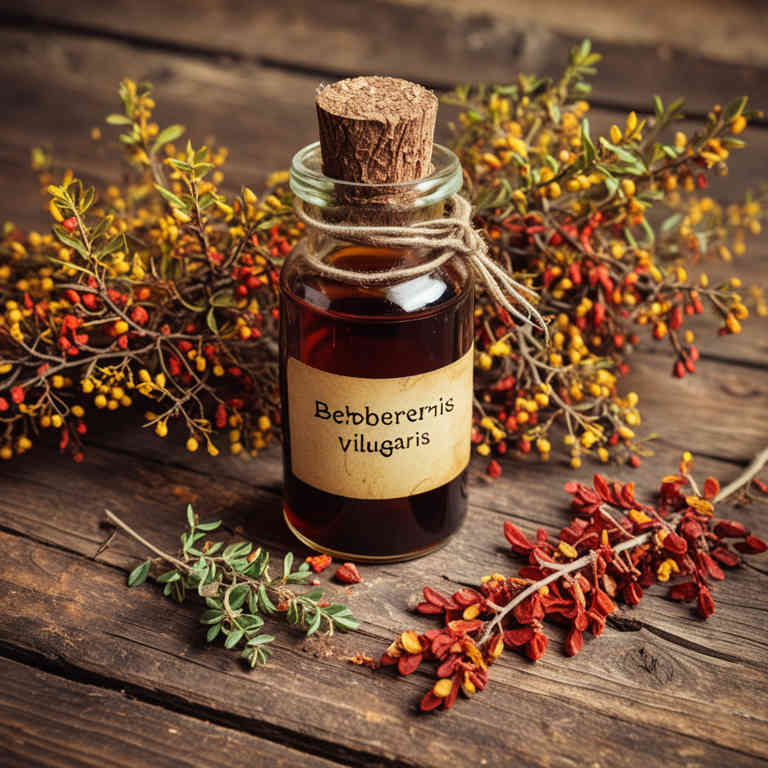
Berberis vulgaris herbal tinctures are used to support digestive health by promoting the secretion of bile and reducing inflammation in the gastrointestinal tract.
They are also commonly utilized for their antimicrobial properties, which can help in treating infections caused by bacteria, fungi, and parasites. These tinctures are often incorporated into traditional medicine practices to alleviate symptoms of skin conditions such as eczema and psoriasis due to their anti-inflammatory and antiseptic effects. Additionally, berberine, the active compound in berberis vulgaris, has been studied for its potential role in managing blood sugar levels and improving cardiovascular health.
Overall, the versatility of berberis vulgaris tinctures makes them a valuable natural remedy in both traditional and modern health practices.
95. Lycium barbarum
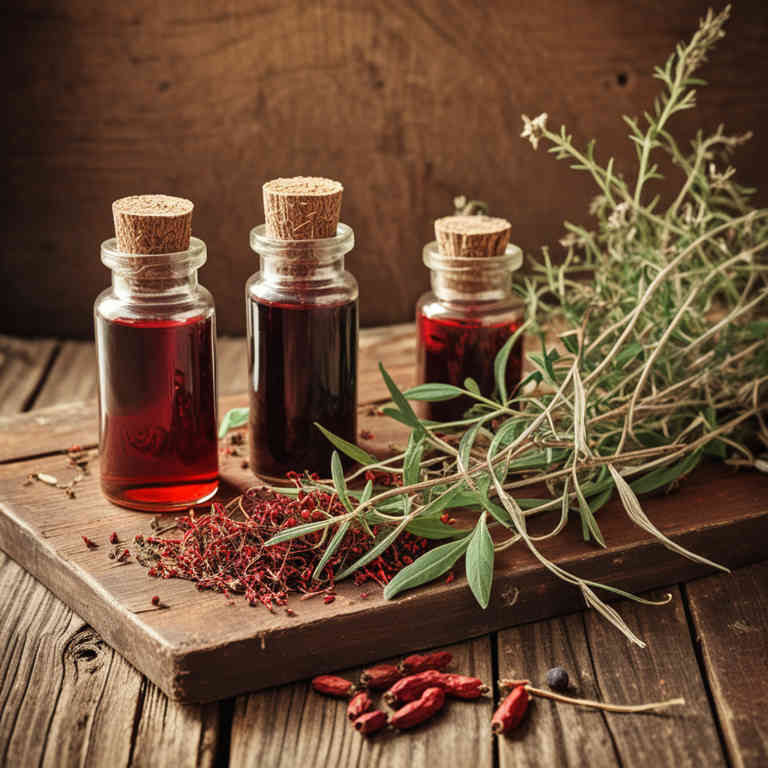
Lycium barbarum herbal tinctures are used to support immune function and enhance overall vitality due to their rich content of antioxidants, particularly beta-carotene and zeaxanthin.
These tinctures are also valued for their potential to improve eye health, as the nutrients in lycium barbarum may help protect against age-related macular degeneration. Additionally, they are often used to promote skin health by reducing oxidative stress and supporting collagen production. The adaptogenic properties of lycium barbarum make it useful for reducing stress and improving energy levels, making it a popular choice in herbal medicine.
Because of these diverse benefits, lycium barbarum tinctures are increasingly sought after for their holistic health support.
96. Papaver somniferum

Papaver somniferum herbal tinctures are used to alleviate pain, reduce inflammation, and induce relaxation due to their opioid alkaloid content, such as morphine and codeine.
These tinctures have historically been employed in medical settings for managing severe pain, particularly in post-operative recovery and chronic conditions. Their sedative properties make them useful in treating insomnia and anxiety, though they must be used cautiously due to the risk of dependency. However, the use of these tinctures is tightly regulated due to their potential for abuse and the legal restrictions surrounding opiate-based medications.
Despite their therapeutic benefits, the risks associated with long-term use and addiction necessitate professional medical supervision.
97. Salvia miltiorrhiza
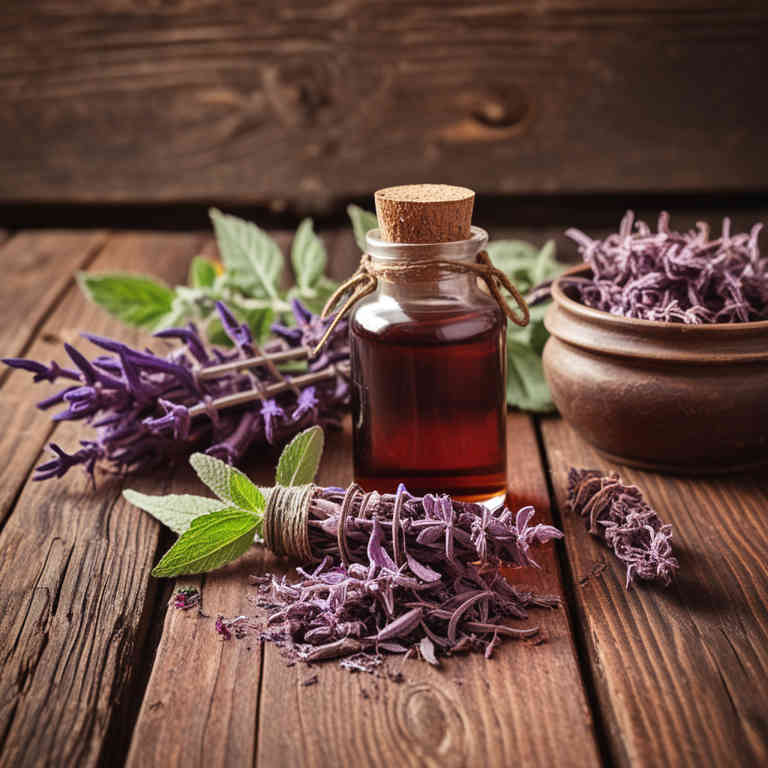
Salvia miltiorrhiza herbal tinctures are used to promote cardiovascular health by improving blood circulation and reducing cholesterol levels.
They are also commonly utilized in traditional Chinese medicine to support liver function and detoxification processes. These tinctures may help in managing conditions such as hypertension and ischemic heart disease due to their antioxidant and anti-inflammatory properties. Additionally, they are believed to enhance cognitive function and may be used to support overall immune system health.
The effectiveness of salvia miltiorrhiza tinctures is attributed to the presence of active compounds like tanshinone and salvianolic acid, which contribute to their therapeutic benefits.
98. Berberis aristata
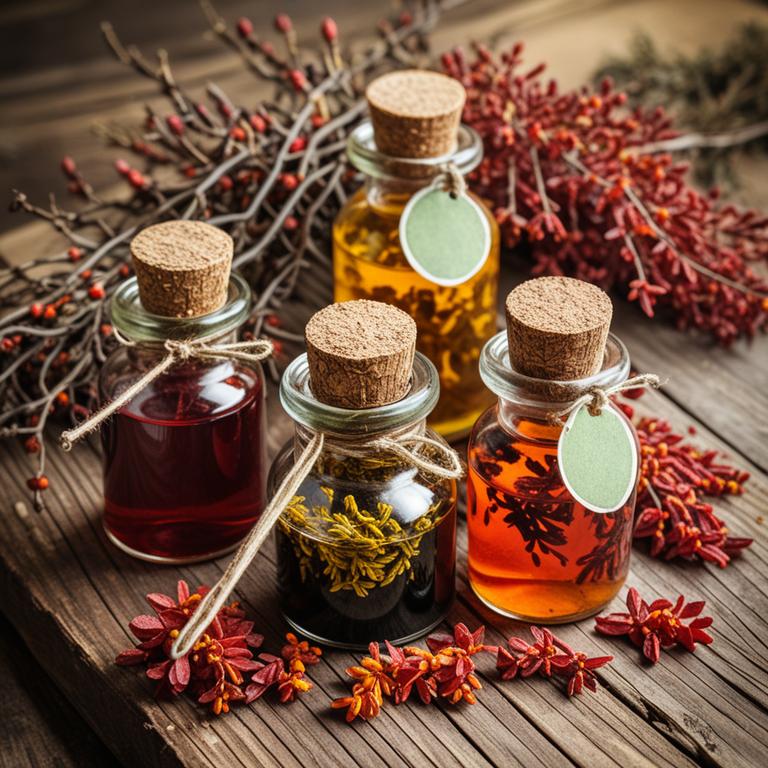
Berberis aristata herbal tinctures are used to support digestive health due to their active compound, berberine, which has antimicrobial and anti-inflammatory properties.
They are commonly employed to treat gastrointestinal issues such as diarrhea, indigestion, and irritable bowel syndrome by enhancing gut flora balance and reducing harmful bacterial overgrowth. Additionally, these tinctures are valued for their potential in managing blood sugar levels, making them a popular complementary therapy for individuals with type 2 diabetes. The anti-inflammatory effects of berberine also make berberis aristata tinctures beneficial in addressing skin conditions and infections.
Overall, their broad-spectrum benefits contribute to their widespread use in both traditional and modern herbal medicine practices.
99. Eclipta prostrata

Eclipta prostrata herbal tinctures are used to support hair growth and improve scalp health due to their rich content of bioactive compounds such as antioxidants and phytoestrogens.
These tinctures are traditionally employed in Ayurvedic medicine to treat baldness and promote the regeneration of hair follicles. The anti-inflammatory and antimicrobial properties of eclipta prostrata help reduce scalp irritation and infections that may hinder hair growth. Additionally, the tinctures are believed to enhance overall vitality and may contribute to skin health by balancing sebum production.
Their versatility in both topical and internal applications makes them a valuable remedy in holistic approaches to hair and skin care.
100. Moringa oleifera
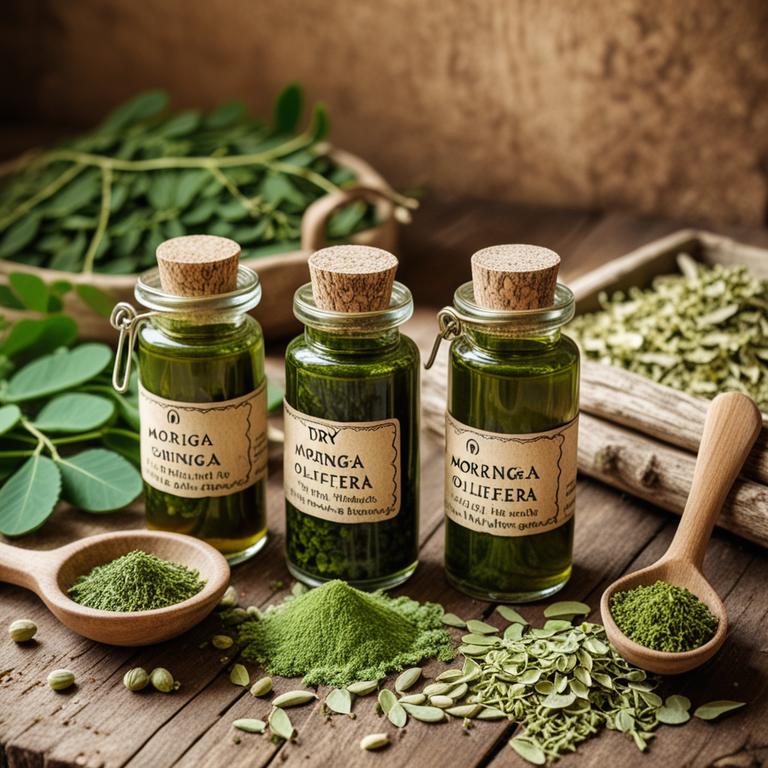
Moringa oleifera herbal tinctures are used to support overall health and wellness through their rich nutritional and medicinal properties.
These tinctures are valued for their high concentration of vitamins, minerals, and antioxidants, which can help boost the immune system and promote cellular health. They are commonly used to aid in digestion and reduce inflammation, making them beneficial for individuals with digestive issues or chronic inflammatory conditions. Additionally, moringa tinctures may contribute to skin health and hair growth due to their nutrient-dense profile.
Their versatility and potent bioactive compounds make them a popular choice for natural remedies in both traditional and modern health practices.